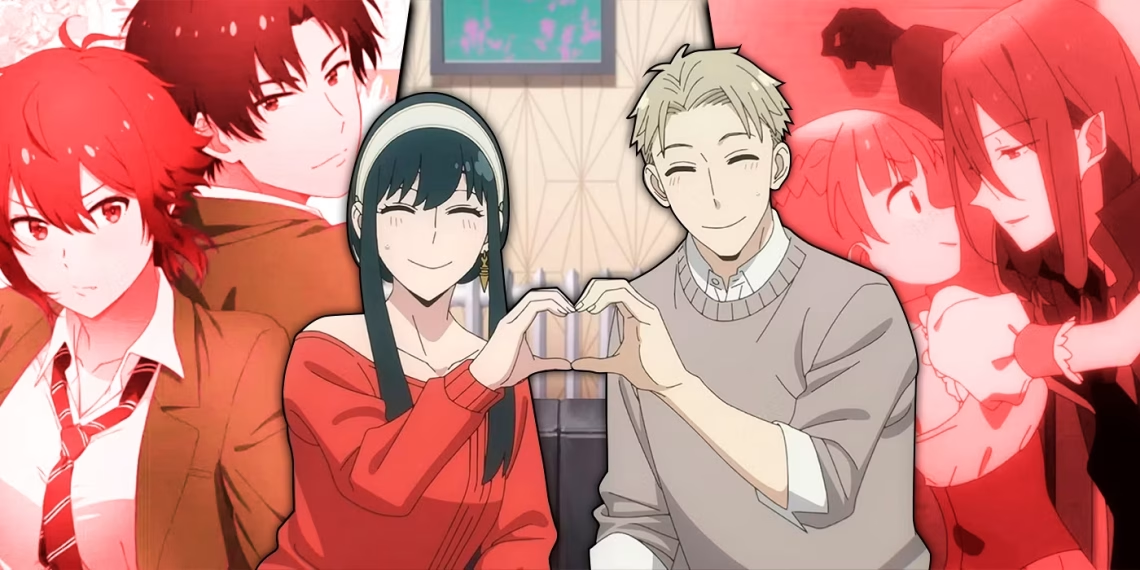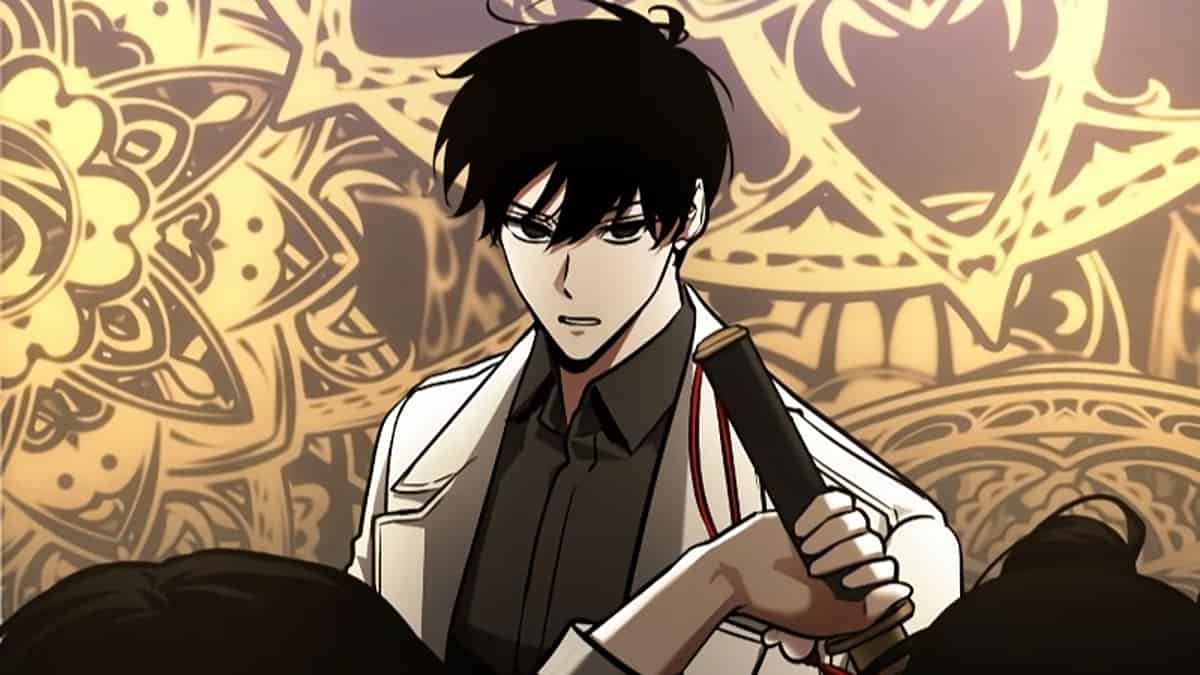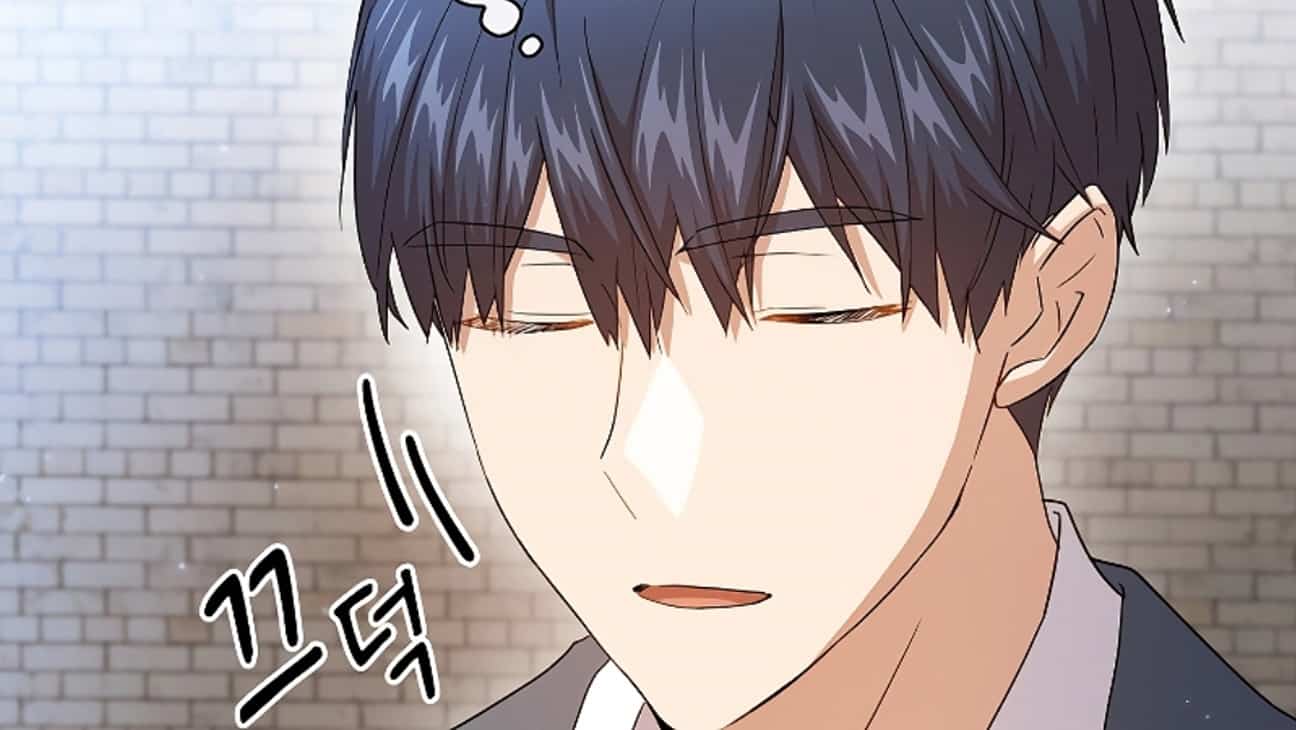Love and anime have a long-standing connection. Regardless of whether the series falls into horror, sci-fi, martial arts, slice-of-life, or any other genre, romance almost always finds its way into the narrative, even if it’s not the central focus.
However, it’s noteworthy that the relationships portrayed are often young and budding, with protagonists navigating through school life or getting on epic adventures. It’s a rare sight to see a happily married anime couple taking the spotlight.
However, married couples in romance anime do exist, and their relationships can be particularly impactful due to the commitment they’ve made to each other.
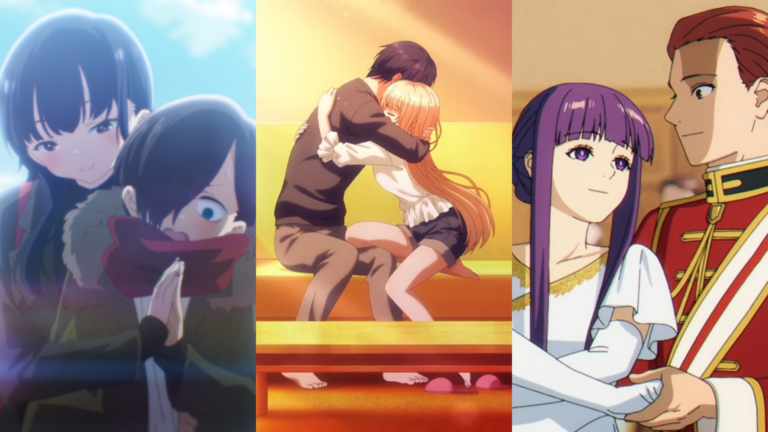
This isn’t to suggest that their relationships are without drama; often, the most compelling aspect of these romances is witnessing two individuals dedicated to each other navigate the challenges and quirks of their partner. In these anime, love is depicted as something enduring and eternal.
The Spring 2024 anime season introduces romance anime focusing on married couples, with two standout titles deserving special mention. Among them, “Chillin’ in Another World with Level 2 Super Cheat Powers” stands out as Fenrys and Flio, though not officially married, display nice chemistry while pretending to be wedded.
Additionally, “An Archdemon’s Dilemma: How to Love Your Elf Bride,” “Mission: Yozakura Family,” and “Spice and Wolf: Merchant Meets the Wise Wolf” offer compelling narratives for those intrigued by this theme. Notably, “Mushoku Tensei: Jobless Reincarnation” kicks off its current season with a wedding, adding further depth to the season’s lineup.
13. Spy x Family
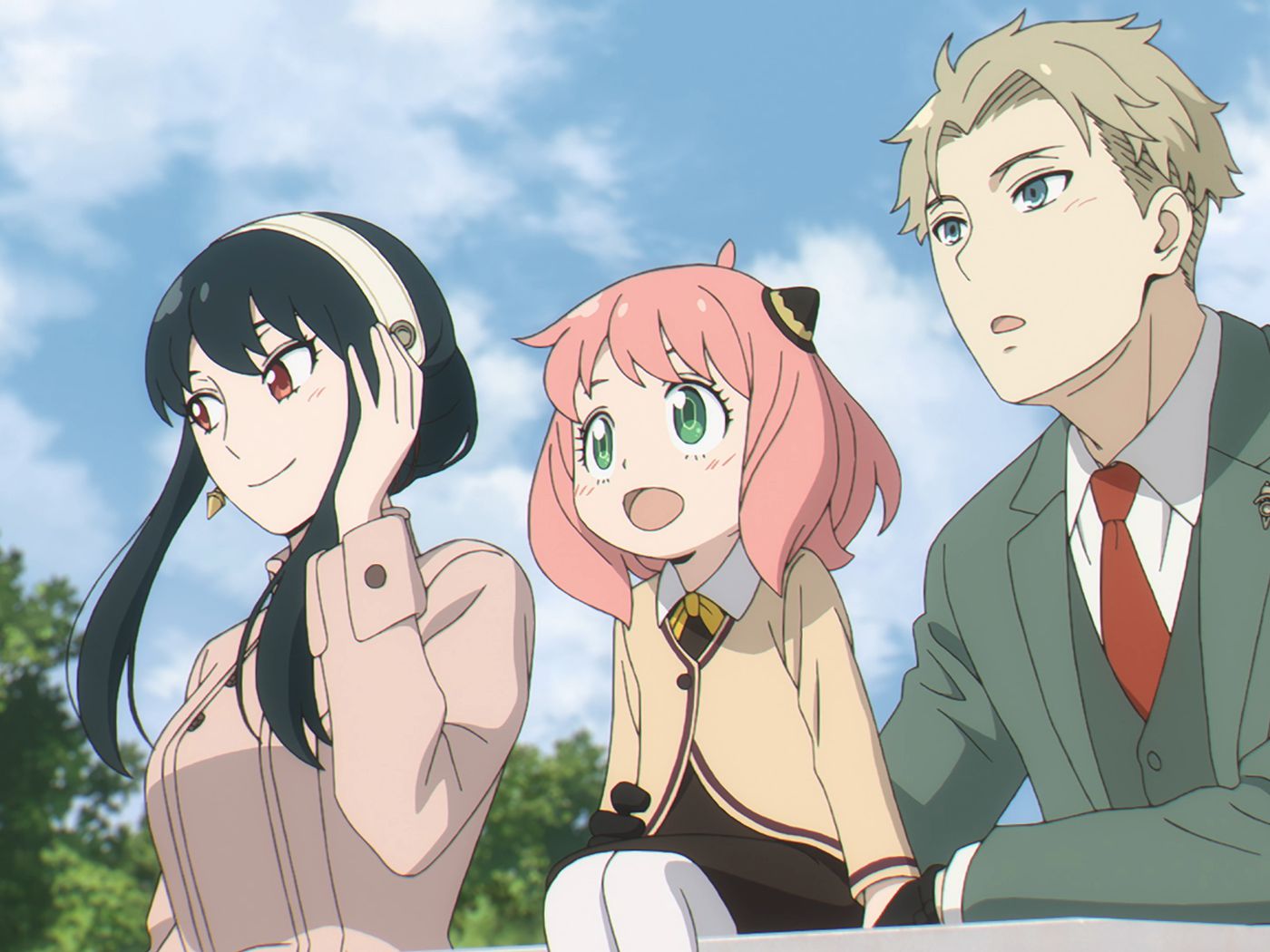
Yor and Loid from Spy x Family undoubtedly rank among the most formidable married pairs in anime lore. Despite their union being founded on deception, their bond evolved into something remarkably strong. The intricacies of both Loid and Yor’s characters add layers to their dynamic, as one operates covertly as a spy while the other excels as an assassin, each harboring its own clandestine objectives.
Yet, their synergy is striking. Initially posing as a faux married couple, they swiftly cultivate a genuine respect and admiration for one another. Through numerous perilous escapades and missions, they consistently provide unwavering support, forming an unbreakable partnership.
Their daily endeavors as a family unit catalyze an unexpected development: genuine affection blossoms between them. This progression renders their relationship a source of entertainment, hilarity, and warmth for fans, showcasing a truly unique and fascinating journey.

“Spy x Family” is an exhilarating manga series written and illustrated by Tatsuya Endo. Serialized since 2019, it has swiftly gained acclaim for its unique blend of action, comedy, and heartwarming family dynamics.
Set in a fictional Cold War-inspired world, “Spy x Family” follows the story of Twilight, a master spy tasked with a top-secret mission to infiltrate an elite academy. To maintain his cover, Twilight is forced to create a fake family, leading him to adopt a young girl named Anya and enter into a sham marriage with a skilled assassin named Yor Briar.
As Twilight navigates the treacherous world of espionage, he must also navigate the challenges of family life, balancing his dangerous missions with his newfound responsibilities as a husband and father. Along the way, he discovers that his fake family may not be as fake as he initially thought, as they develop genuine bonds and support one another through their trials and tribulations.

The heart of “Spy x Family” lies in its endearing characters, each with their own quirks, secrets, and vulnerabilities. Twilight, the stoic and resourceful spy, serves as the protagonist, with a talent for deception and a soft spot for his makeshift family. His bond with Anya, a precocious young girl with psychic abilities, and Yor, a deadly assassin with a hidden past, form the emotional core of the series.
The supporting cast includes a variety of colorful characters who enrich the narrative with their unique personalities and perspectives. From Twilight’s fellow spies to the students and teachers at the academy, each character contributes to the series’ exploration of friendship, loyalty, and the complexities of human relationships.
“Spy x Family” explores themes of identity, loyalty, and the meaning of family in a world filled with deception and intrigue. Through Twilight and his fake family’s interactions, the series examines the ways in which people navigate the blurred lines between truth and fiction and forge genuine connections in unexpected places.

Additionally, “Spy x Family” goes into themes of acceptance and belonging, as characters grapple with their own insecurities and learn to embrace their true selves. Whether it’s Twilight coming to terms with his past or Anya learning to control her psychic abilities, the series offers a heartfelt and uplifting message about the power of love and acceptance.
Tatsuya Endo’s artwork is a visual feast, characterized by detailed character designs, dynamic action sequences, and expressive facial expressions that bring the world of “Spy x Family” to life. The illustrations are rendered with a lively energy and a sense of humor that complements the series’ comedic tone and fast-paced narrative.
The atmosphere of “Spy x Family” is one of excitement and suspense, as characters navigate the twists and turns of the espionage world while also dealing with the everyday challenges of family life.
From high-stakes missions to heartwarming moments of domestic bliss, each scene is beautifully rendered, immersing readers in the exhilarating and heartwarming world of the series.
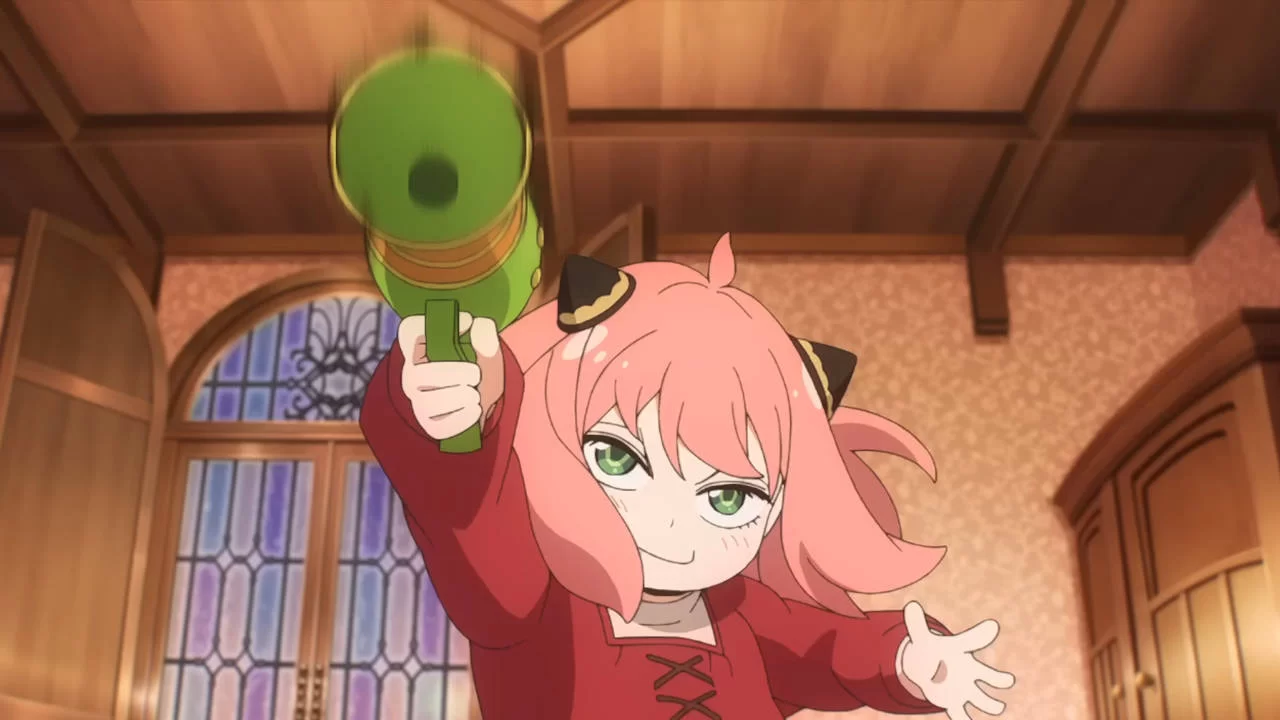
Spy x Family is a delightful and nice manga series that offers a perfect blend of action, comedy, and heartwarming family dynamics. With its endearing characters, engaging plot, and stunning artwork, it’s sure to appeal to readers of all ages.
Whether you’re a fan of espionage thrillers or simply looking for a heartwarming story to brighten your day, “Spy x Family” is a must-read for anyone who appreciates the power of love, laughter, and the bonds of family.
12. More Than A Married Couple, But Not Lovers

In a peculiar high school setting, a unique practical exercise unfolds where students are paired off to simulate married life, despite lacking genuine romantic entanglements. Enter Jirou, an ordinary student, unexpectedly paired with Akari, a popular girl sporting a Gyaru fashion sense. Complicating matters further, their respective crushes find themselves paired together, injecting immediate tension into the scenario.
Initially seeming like a run-of-the-mill fanservice-driven series, More Than A Married Couple, But Not Lovers surprises with its hidden depths. As Akari and Jirou navigate this unconventional arrangement, their initial assumptions about each other are challenged, paving the way for a gradual and meaningful bond to form.
While their marriage may consist mainly of lounging together on the living room sofa, it becomes a backdrop for genuine and heartfelt conversations to unfold. Through this practical exercise, Akari and Jirou’s relationship evolves, revealing layers beyond the superficial premise of the series.
“More Than A Married Couple, But Not Lovers” (Japanese: “Tsumari Suki ga Ki na Koto”) is a compelling manga series written and illustrated by Hashigo Sakurabi. Serialized since 2015, it has garnered attention for its nuanced exploration of relationships, identity, and the complexities of love.
Set in contemporary Japan, “More Than A Married Couple, But Not Lovers” follows the story of Ryouma Ichijou and Masaki Hoshina, two childhood friends who find themselves living together as adults. While Ryouma harbors romantic feelings for Masaki, Masaki remains oblivious to his friend’s affections, leading to a delicate balance between their platonic bond and the unspoken tension that lingers between them.
As Ryouma and Masaki navigate the ups and downs of their shared life, they must confront their own insecurities and desires, grappling with the complexities of friendship, love, and the fear of rejection. Along the way, they encounter a diverse cast of characters, each with their own struggles and aspirations, as they navigate the complexities of adulthood and the pursuit of happiness.
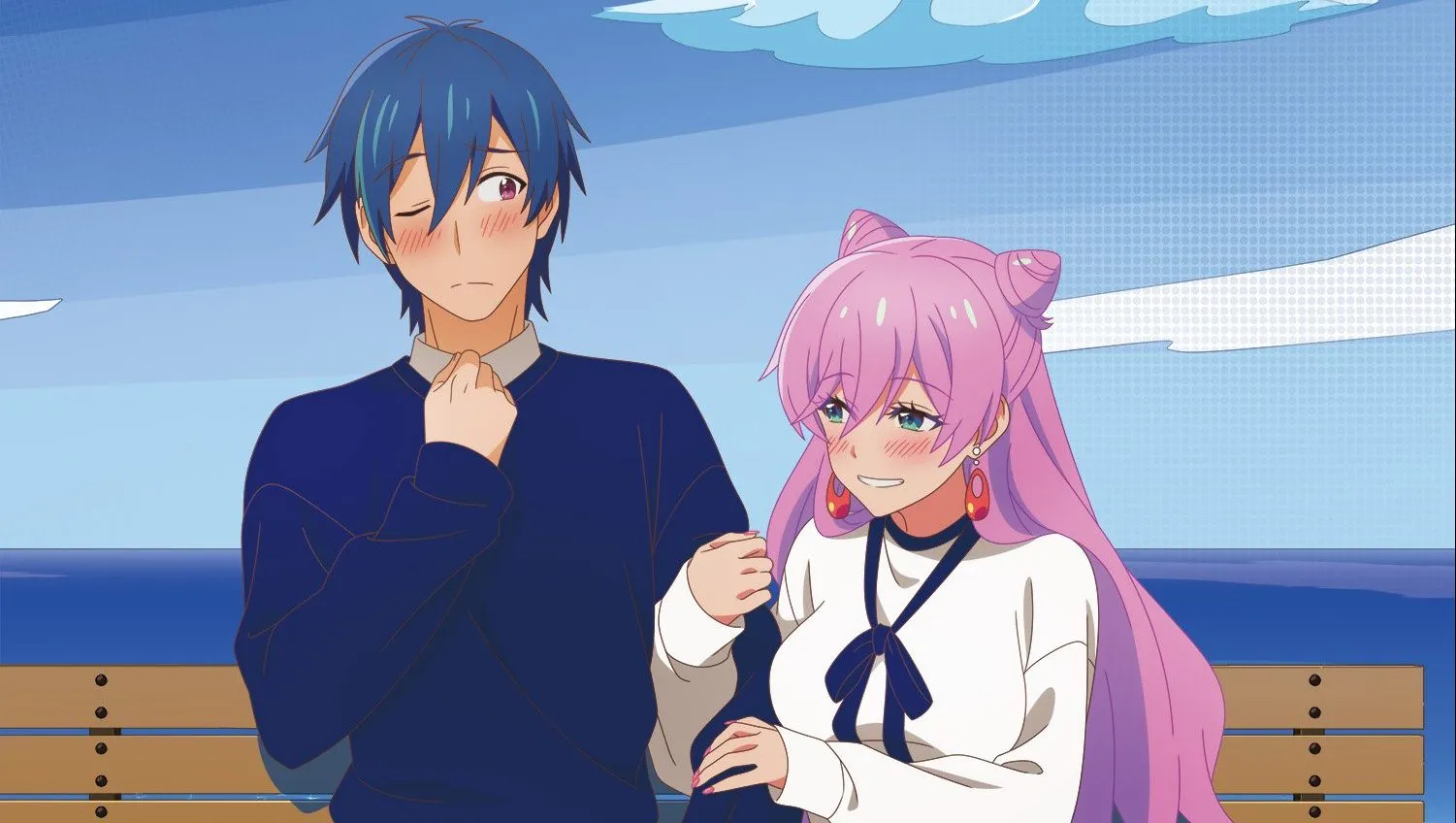
The heart of “More Than A Married Couple, But Not Lovers” lies in its endearing characters, each with their own hopes, fears, and vulnerabilities. Ryouma Ichijou is a relatable and empathetic protagonist, whose unrequited love for Masaki drives much of the series’ emotional tension. His bond with Masaki, a kind-hearted and oblivious friend, serves as the emotional core of the series.
The supporting cast includes a variety of colorful characters who enrich the narrative with their unique personalities and perspectives. From Ryouma and Masaki’s friends and family to their coworkers and acquaintances, each character contributes to the series’ exploration of friendship, love, and the complexities of human relationships.
“More Than A Married Couple, But Not Lovers” explores themes of identity, desire, and the search for connection in a world filled with uncertainty. Through Ryouma and Masaki’s relationship, the series examines the ways in which people navigate the blurred lines between friendship and romance and the challenges of expressing their true feelings.
Additionally, “More Than A Married Couple, But Not Lovers” goes into themes of self-discovery and acceptance, as characters confront their own insecurities and learn to embrace their true selves. Whether it’s Ryouma coming to terms with his feelings for Masaki or Masaki confronting his own fears of intimacy, the series offers a heartfelt and uplifting message about the power of love and authenticity.
Hashigo Sakurabi’s artwork is a visual delight, characterized by detailed character designs, expressive facial expressions, and atmospheric backgrounds that bring the world of “More Than A Married Couple, But Not Lovers” to life. The illustrations are rendered with a soft and delicate touch, capturing the quiet beauty of everyday life and the emotional depth of the characters’ experiences.
The atmosphere of “More Than A Married Couple, But Not Lovers” is one of intimacy and introspection, as characters navigate the complexities of their relationships and confront their innermost thoughts and feelings. From quiet moments of reflection to dramatic confrontations, each scene is beautifully rendered, immersing readers in the emotional journey of the series.
More Than A Married Couple, But Not Lovers” is a heartfelt and poignant manga series that offers a nuanced exploration of friendship, love, and the complexities of human relationships. With its endearing characters, engaging plot, and stunning artwork, it’s sure to resonate with readers of all ages.
Whether you’re a fan of romance manga or simply looking for a touching story about the power of connection, “More Than A Married Couple, But Not Lovers” is a must-read for anyone who appreciates the beauty of love in all its forms.
11. Troublesome Old Man
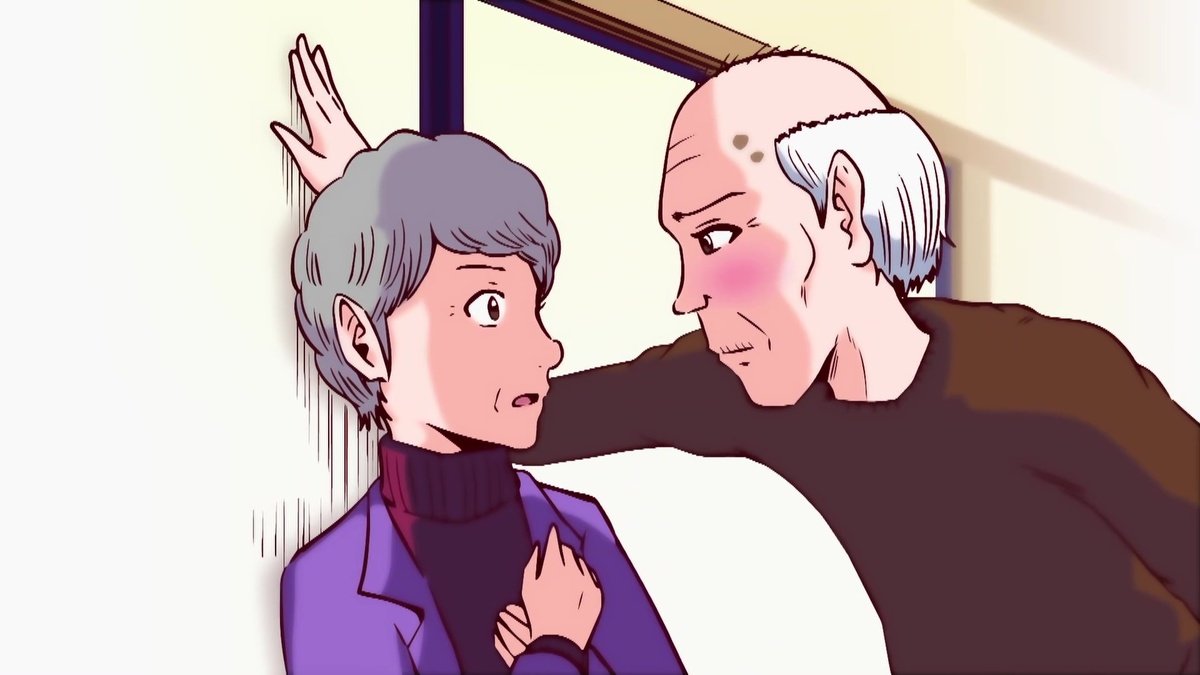
When it comes to depicting love in the later stages of life, few anime can rival the charm of Komatta Jii-san. Though its one-minute episodes may fly by in an instant, the lasting impact of its heartwarming portrayal of enduring love will linger with viewers long after the series concludes.
Centered around an elderly man who delights in flirting with his wife to bring her joy, Komatta Jii-san thrives on its minimalist approach. Each episode unfolds like a meticulously crafted comedy set, gradually building towards a delightful punchline.
Witnessing the interactions between husband and wife, steeped in decades of shared history and affection, allows viewers to envision the depth of their relationship in their youth, adding an extra layer of endearment to their continued adoration for each other.
“Troublesome Old Man” (Japanese: “Jijii 100%”) is a heartwarming manga series written and illustrated by Masakazu Yamaguchi. Serialized since 2019, it has gained popularity for its charming characters, humorous storytelling, and poignant exploration of family dynamics and the passage of time.
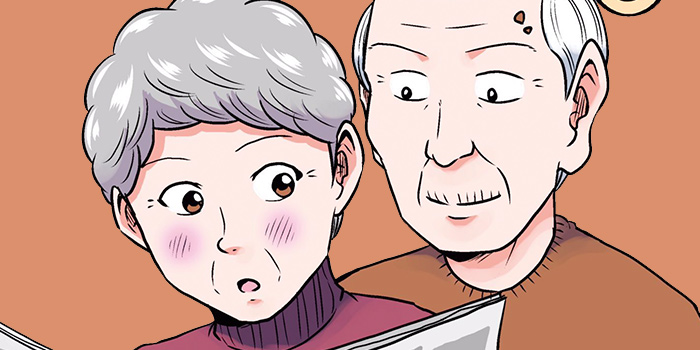
Set in modern-day Japan, “Troublesome Old Man” follows the story of Kenta Nakashima, a young salaryman who finds himself tasked with taking care of his cantankerous grandfather, Ichinosuke. Despite their generation gap and clashing personalities, Kenta and Ichinosuke must learn to coexist under the same roof, leading to a series of comedic and heartwarming misadventures.
As Kenta struggles to balance his career and personal life with his newfound responsibilities as a caregiver, he discovers that there’s more to his grandfather than meets the eye. Through their interactions, Kenta and Ichinosuke forge a bond that transcends age and experience, teaching them valuable lessons about love, family, and the importance of cherishing the moments we have together.
The heart of “Troublesome Old Man” lies in its endearing characters, each with their own quirks, flaws, and insecurities. Kenta Nakashima is a relatable and empathetic protagonist, whose initial frustration with his grandfather gives way to a deeper appreciation for the old man’s wisdom and resilience. His bond with Ichinosuke, a stubborn and outspoken elder with a penchant for mischief, serves as the emotional core of the series.
The supporting cast includes a variety of colorful characters who enrich the narrative with their unique personalities and perspectives. From Kenta’s friends and colleagues to his extended family and neighbors, each character contributes to the series’ exploration of friendship, love, and the complexities of human relationships.
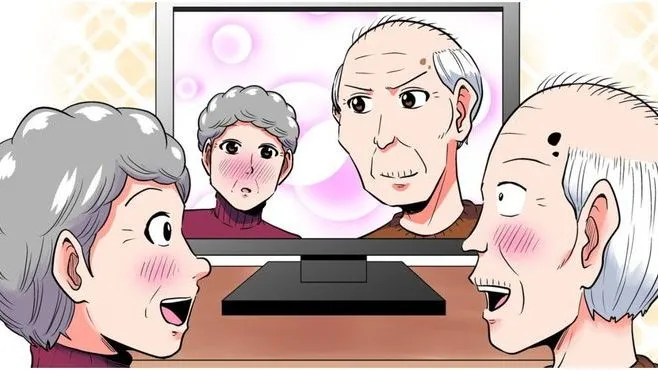
“Troublesome Old Man” explores themes of family, aging, and the passage of time in a world that often values youth and vitality above all else. Through Kenta and Ichinosuke’s relationship, the series examines the ways in which people navigate the challenges of intergenerational communication and find common ground amidst their differences.
Additionally, “Troublesome Old Man” goes into themes of resilience and adaptation, as characters confront the inevitability of change and learn to embrace life’s uncertainties with grace and humor. Whether it’s Kenta coming to terms with his grandfather’s stubbornness or Ichinosuke rediscovering the joys of youth through his grandson’s eyes, the series offers a heartfelt and uplifting message about the power of love and connection.
Masakazu Yamaguchi’s artwork is a visual delight, characterized by detailed character designs, expressive facial expressions, and dynamic panel layouts that bring the world of “Troublesome Old Man” to life. The illustrations are rendered with a playful energy and a sense of humor that complements the series’ comedic tone and heartfelt storytelling.
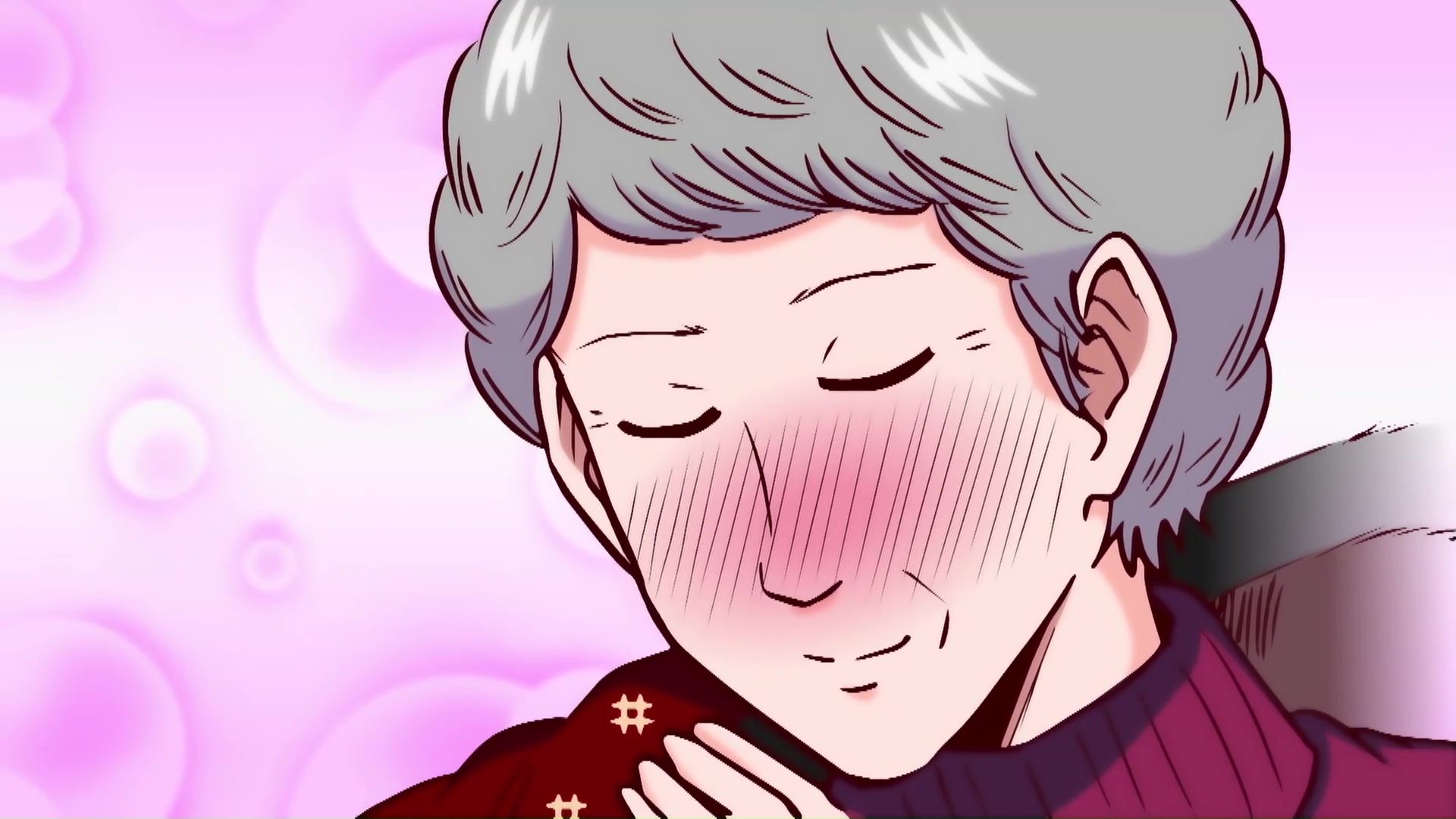
The atmosphere of “Troublesome Old Man” is one of warmth and nostalgia, as characters navigate the ups and downs of family life and confront the challenges of growing older together. From heartwarming family dinners to hilarious misunderstandings and mishaps, each scene is beautifully rendered, immersing readers in the heartwarming and relatable world of the series.
Troublesome Old Man” is a delightful and uplifting manga series that offers a touching exploration of family, love, and the joys of intergenerational relationships. With its endearing characters, engaging plot, and charming artwork, it’s sure to resonate with readers of all ages.
Whether you’re a fan of slice-of-life manga or simply looking for a heartwarming story about the power of connection, “Troublesome Old Man” is a must-read for anyone who appreciates the beauty of love in all its forms.
10. Welcome Home
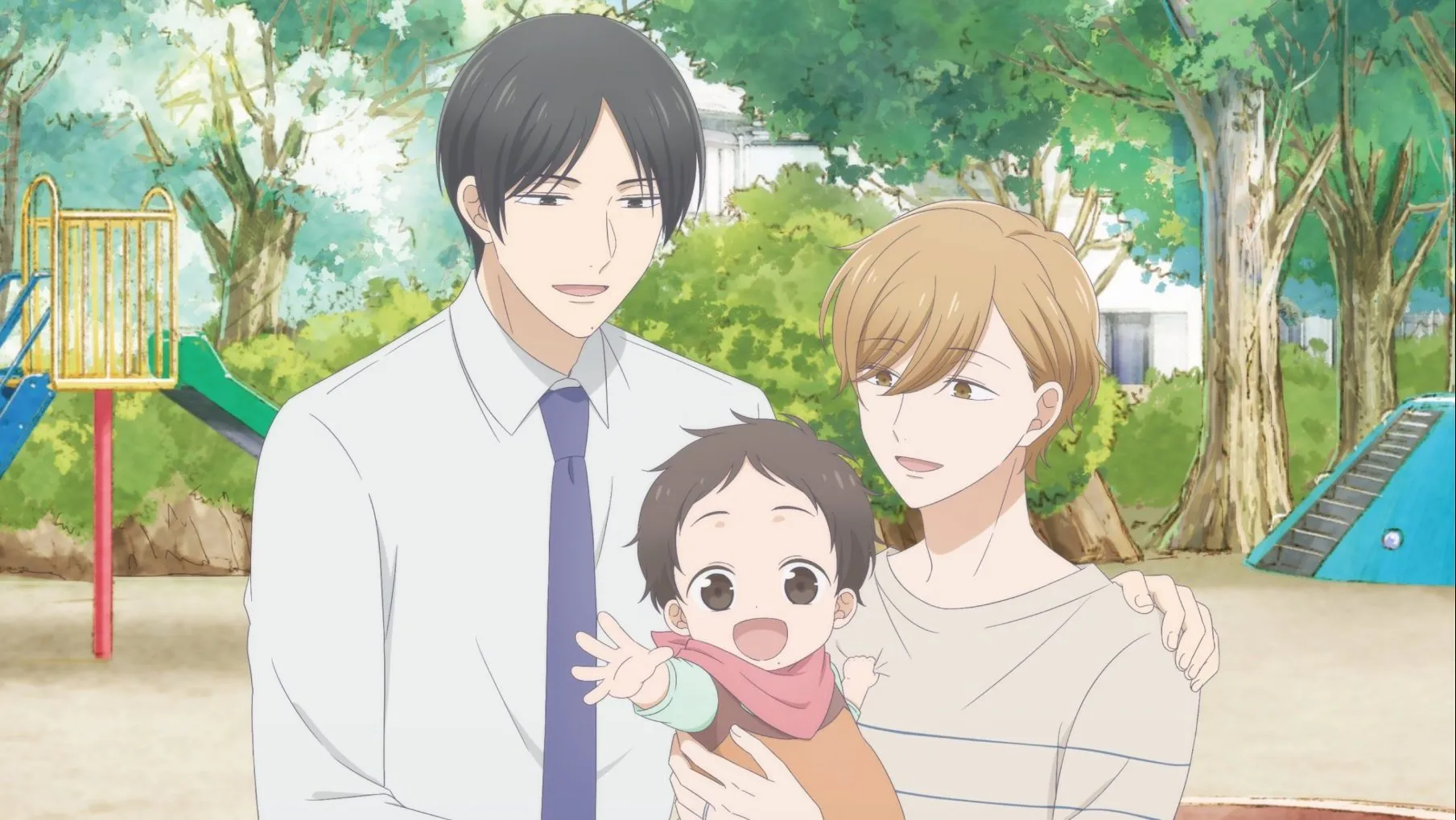
Set in the Omegaverse, Welcome Home emerges as a slice-of-life romance unfolding within a society steeped in erotic fiction. At its core lies the story of a young married couple navigating the complexities of raising two children amidst societal prejudices.
Within the Omegaverse framework, individuals are categorized into distinct gender tiers—Alphas, Betas, and Omegas—based on their reproductive abilities. Omegas, capable of bearing children regardless of their gender, often find themselves marginalized by societal norms.
Masaki, an Omega, grapples with feelings of inadequacy within his marriage to Hiromu, an Alpha, and in his role as a parent. Welcome Home skillfully intertwines heartwarming family moments with poignant reflections on Masaki’s childhood traumas, striking a delicate balance that allows both elements to shine.
The central couple’s dynamic is a highlight, their interactions imbued with history and unwavering support. While Hiromu may occasionally appear too idealized, his presence complements Masaki’s journey, adding depth to their relationship.
“Welcome Home” (Japanese: “Okaeri Saeki-san”) is a heartwarming manga series written and illustrated by Ootake. Serialized since 2018, it has garnered praise for its touching portrayal of friendship, healing, and the transformative power of human connection.
Set in modern-day Japan, “Welcome Home” follows the story of Suzuna Saeki, a young woman who returns to her hometown after several years away. Haunted by painful memories from her past, Suzuna seeks solace in the comforting familiarity of her childhood home, hoping to find peace and closure amidst the chaos of her life.
As Suzuna reconnects with old friends and acquaintances, she discovers that the bonds of friendship and community run deep, offering her the support and understanding she needs to confront her inner demons and move forward with her life. Along the way, she learns valuable lessons about love, forgiveness, and the importance of cherishing the moments we have together.
The heart of “Welcome Home” lies in its endearing characters, each with their own hopes, fears, and struggles. Suzuna Saeki is a relatable and empathetic protagonist, whose journey of self-discovery serves as the emotional core of the series. Her bond with her childhood friends, including the kind-hearted Hidetaka and the mischievous Masaaki, serves as a source of strength and support as she confronts her past and embraces her future.
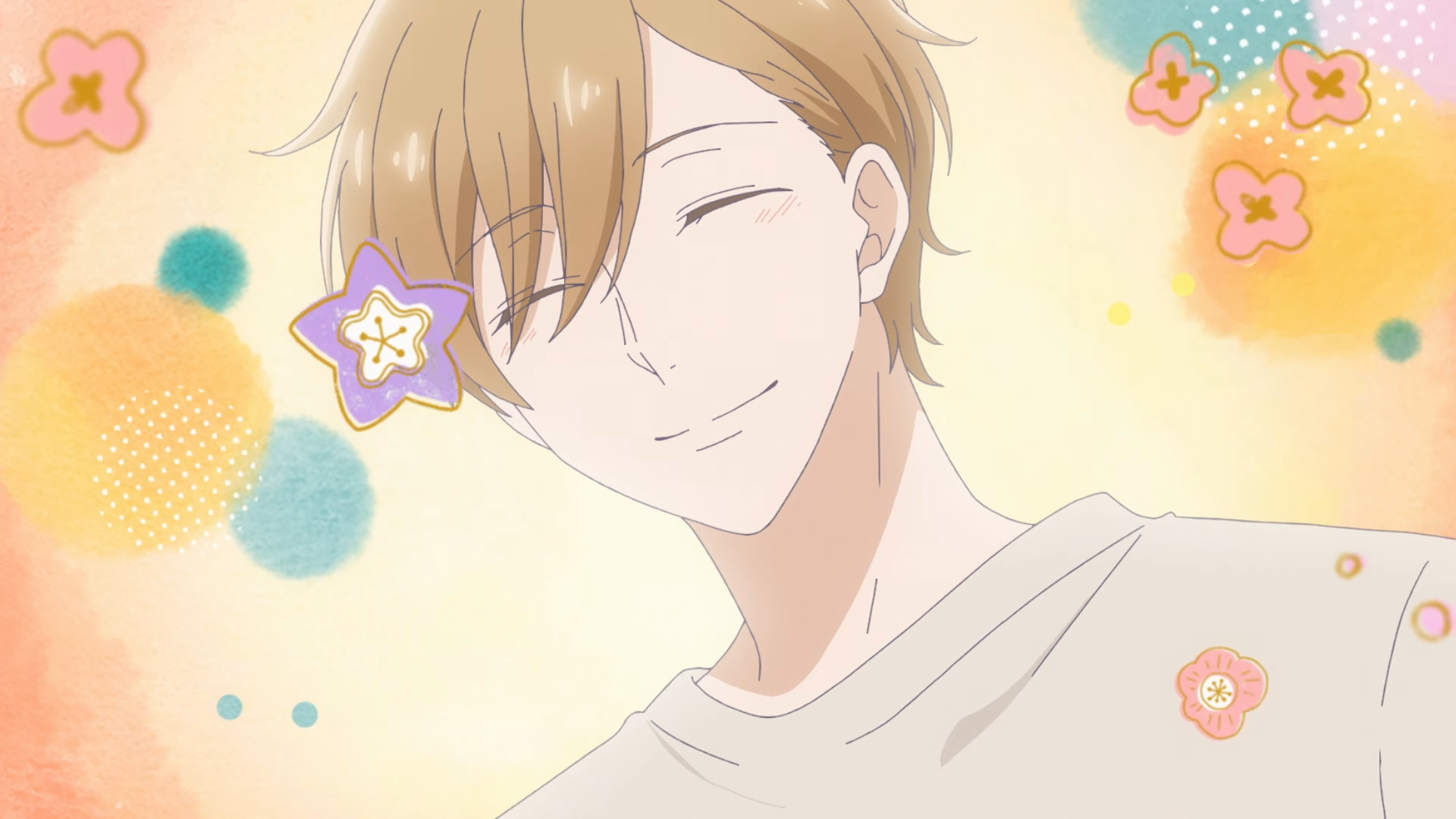
The supporting cast includes a variety of colorful characters who enrich the narrative with their unique personalities and perspectives. From Suzuna’s loving family to the quirky residents of her hometown, each character contributes to the series’ exploration of friendship, love, and the complexities of human relationships.
“Welcome Home” explores themes of healing, forgiveness, and the power of second chances in a world filled with pain and uncertainty. Through Suzuna’s journey, the series examines the ways in which people confront their past traumas and find redemption through the bonds of friendship and community.
Additionally, “Welcome Home” goes into themes of self-discovery and acceptance, as characters confront their own insecurities and learn to embrace their true selves. Whether it’s Suzuna coming to terms with her past or her friends learning to support her through her struggles, the series offers a heartfelt and uplifting message about the resilience of the human spirit.
Ootake’s artwork is a visual delight, characterized by detailed character designs, expressive facial expressions, and atmospheric backgrounds that bring the world of “Welcome Home” to life. The illustrations are rendered with a soft and delicate touch, capturing the quiet beauty of everyday life and the emotional depth of the characters’ experiences.
The atmosphere of “Welcome Home” is one of warmth and nostalgia, as characters navigate the ups and downs of friendship and rediscover the joys of homecoming. From heartfelt reunions to bittersweet farewells, each scene is beautifully rendered, immersing readers in the heartwarming and relatable world of the series.
Welcome Home” is a touching and uplifting manga series that offers a heartfelt exploration of friendship, healing, and the power of human connection. With its endearing characters, engaging plot, and charming artwork, it’s sure to resonate with readers of all ages.
Whether you’re a fan of slice-of-life manga or simply looking for a heartwarming story about the beauty of second chances, “Welcome Home” is a must-read for anyone who appreciates the power of love in all its forms.
9. The Way of the Househusband

Dragon is an impressive moniker, but Immortal Dragon takes it to another level. And Legendary Immortal Dragon? That’s a name that demands attention, even in anime where extravagant names are the norm.
Enter Tatsu, also known as the illustrious Legendary Immortal Dragon. Once a formidable member of the yakuza, he’s now embraced a drastically different role as a devoted househusband. His sole mission? To ensure his wife’s happiness and well-being, whether it’s through cooking, cleaning, showering her with gifts, or simply being there for her in every way possible. The narrative of a bad boy turned good for love is flawlessly executed in The Way of the Househusband, making it shine among J.C. Staff’s repertoire.
“The Way of the Househusband” (“Gokushufudou”) is a unique manga series written and illustrated by Kousuke Oono. Since its serialization in 2018, it has garnered widespread acclaim for its fresh premise, comedic execution, and endearing characters.
“The Way of the Househusband” follows the story of Tatsu, a former yakuza boss who has retired from a life of crime to become a devoted househusband. Despite his intimidating appearance and fearsome reputation, Tatsu is a dedicated spouse who takes his new role seriously, tackling household chores with the same level of intensity and determination he once applied to his criminal activities.
Set in modern-day Japan, the series humorously explores the contrast between Tatsu’s tough exterior and his domestic pursuits, offering a lighthearted and refreshing take on the traditional gender roles within a marriage.
As Tatsu navigates the challenges of grocery shopping, cooking, and cleaning, he encounters a variety of humorous situations and eccentric characters, leading to comedic misadventures that highlight the absurdity of everyday life.
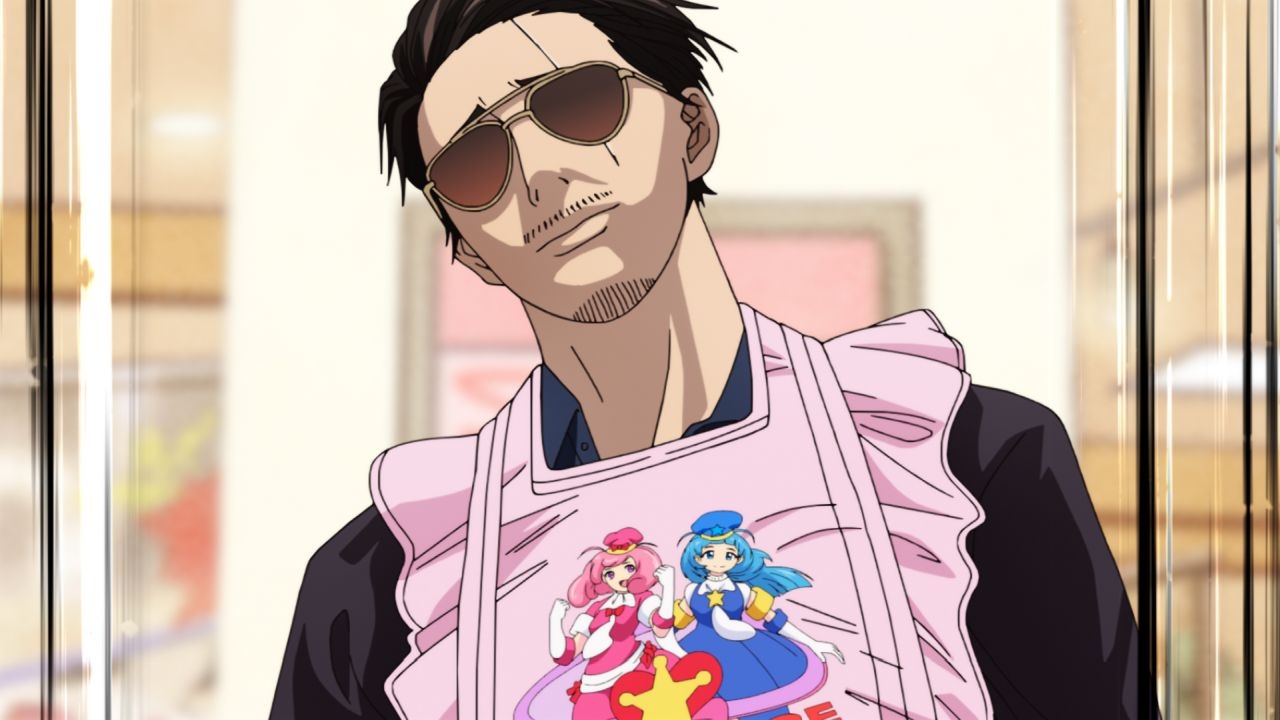
The heart of “The Way of the Househusband” lies in its endearing characters, each with their own quirks, insecurities, and hidden depths. Tatsu is a charismatic and lovable protagonist, whose intimidating appearance belies his gentle nature and unwavering devotion to his wife, Miku. His interactions with Miku, a hardworking career woman who supports him in his new role, serve as the emotional core of the series.
The supporting cast includes a variety of colorful characters who enrich the narrative with their unique personalities and perspectives. From Tatsu’s former yakuza associates to his quirky neighbors and fellow househusbands, each character contributes to the series’ humor and charm, adding depth and dimension to the world of the story.
“The Way of the Househusband” humorously explores themes of gender roles, masculinity, and the value of domestic labor in a world that often overlooks the contributions of stay-at-home spouses. Through Tatsu’s unconventional journey from yakuza boss to devoted househusband, the series challenges traditional stereotypes and celebrates the importance of equality and mutual respect within a relationship.
Additionally, “The Way of the Househusband” goes into themes of redemption and personal growth, as Tatsu confronts his past and learns to embrace his new life with humor and humility. Whether it’s tackling household chores or navigating social interactions with his neighbors, Tatsu’s journey offers a heartfelt and uplifting message about the power of change and the transformative nature of love.
Kousuke Oono’s artwork is a visual delight, characterized by bold linework, expressive character designs, and dynamic panel layouts that bring the world of “The Way of the Househusband” to life. The illustrations are rendered with a playful energy and a sense of humor that complements the series’ comedic tone and fast-paced narrative.
The atmosphere of “The Way of the Househusband” is one of warmth and nostalgia, as characters navigate the ups and downs of everyday life with humor and grace. From Tatsu’s culinary creations to his encounters with unexpected visitors and old rivals, each scene is beautifully rendered, immersing readers in the charming and relatable world of the series.
The Way of the Househusband is a delightful and heartwarming manga series that offers a fresh take on the comedy genre. With its endearing characters, engaging plot, and charming artwork, it’s sure to appeal to readers of all ages.
Whether you’re a fan of slice-of-life manga or simply looking for a lighthearted and entertaining read, “The Way of the Househusband” is a must-read for anyone who appreciates the humor and warmth of everyday life.
8. Clannad
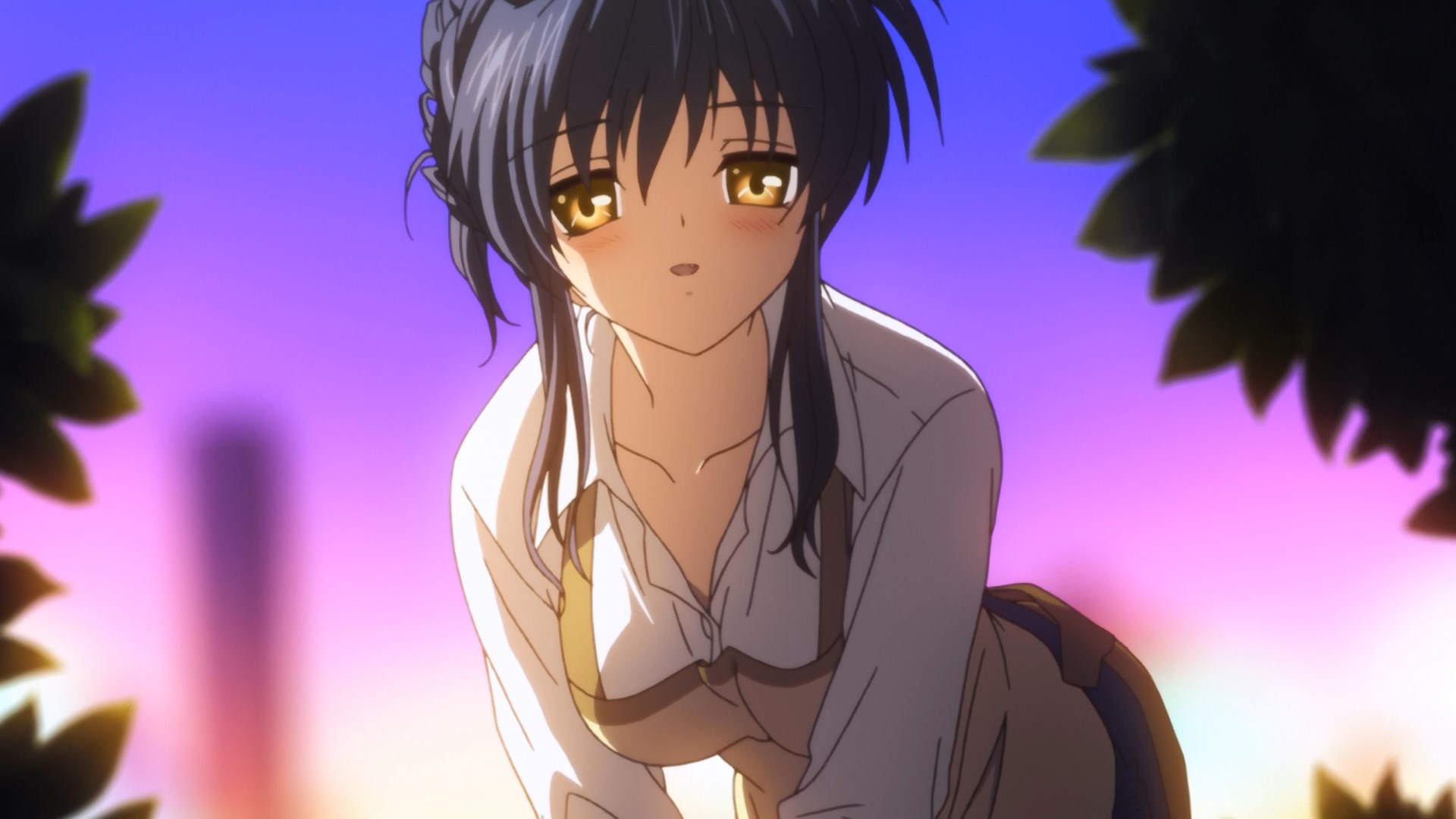
Clannad: After Story continues the journey from Clannad, with protagonists Tomoya and Nagisa getting on married life after high school.
The anime endeavors to portray a genuine and comprehensive depiction of marriage, capturing both its joys and its challenges. Unlike many romance anime, Clannad: After Story looks into the less-explored territory of aging and witnessing one’s partner evolve over time.
While it may not achieve perfection in depicting this process—perhaps no series could—it certainly goes beyond the norm in exploring the complexities of love as it matures with age.
“Clannad” is a beloved visual novel, manga, and anime series that has grabbed audiences with its emotionally resonant storytelling, rich character development, and poignant exploration of themes such as family, love, and redemption. Created by Key and initially released as a visual novel in 2004, “Clannad” has since become a cultural phenomenon, spawning multiple adaptations and spin-offs.
The story of “Clannad” centers around Tomoya Okazaki, a disillusioned high school student who is struggling to find meaning and purpose in his life. Estranged from his father and burdened by the weight of past traumas, Tomoya finds solace in the company of Nagisa Furukawa, a shy and gentle girl with her own struggles.
Set in the fictional town of Hikarizaka, “Clannad” follows Tomoya and Nagisa as they navigate the complexities of adolescence, friendship, and romance, forming deep connections with their classmates and discovering the power of empathy and compassion along the way.
As they confront their own insecurities and confront the challenges of growing up, they learn valuable lessons about the importance of forgiveness, acceptance, and the bonds of family.
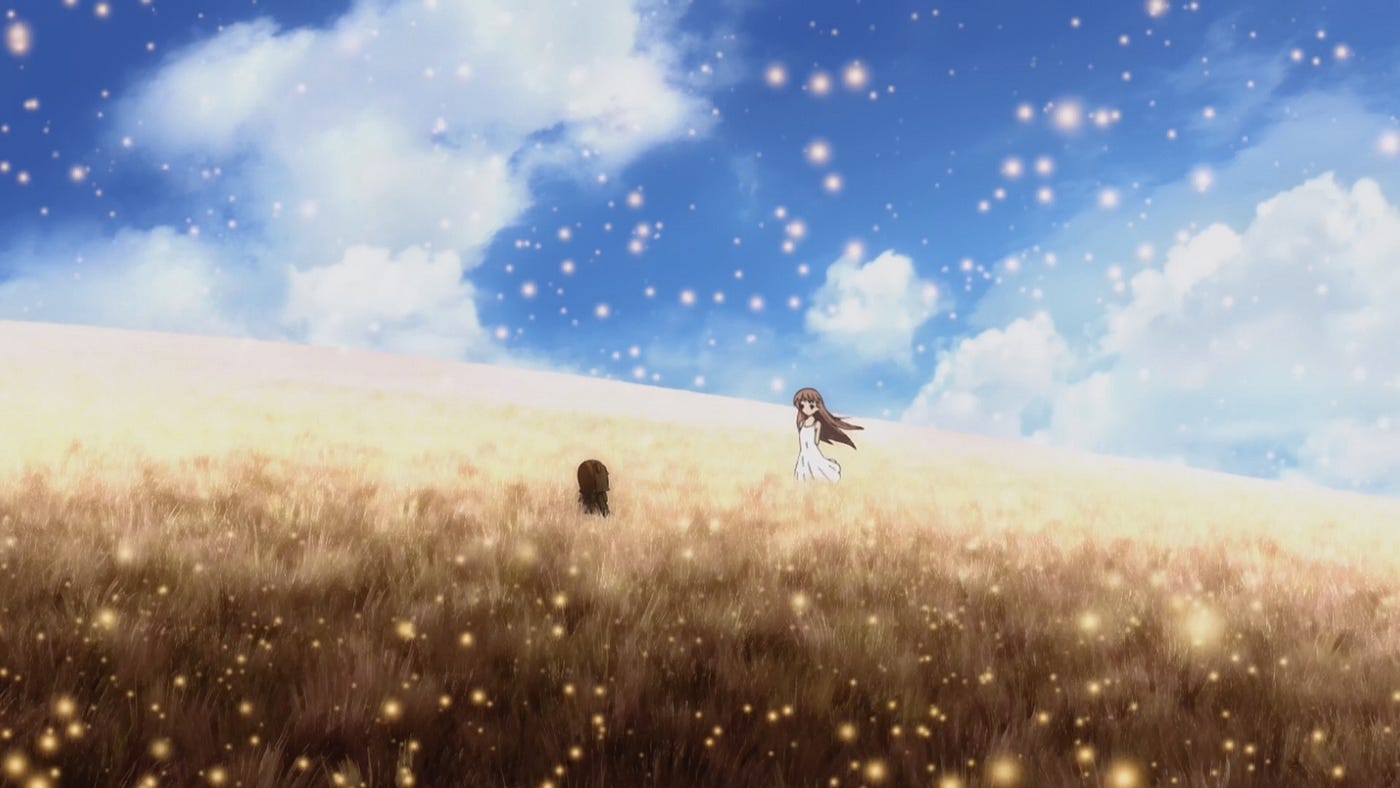
The heart of “Clannad” lies in its rich and multifaceted characters, each with their own hopes, dreams, and vulnerabilities. Tomoya Okazaki is a compelling and relatable protagonist, whose journey of self-discovery serves as the emotional core of the series. His bond with Nagisa Furukawa, a kind-hearted and resilient young woman with a passion for theater, forms the central romance of the story.
The supporting cast includes a diverse array of characters who enrich the narrative with their unique personalities and perspectives. From Tomoya and Nagisa’s classmates to their family members and friends, each character contributes to the series’ exploration of friendship, love, and the complexities of human relationships.
“Clannad” explores a wide range of themes, including the importance of family, the power of love, and the impact of our choices on ourselves and those around us. Through Tomoya and Nagisa’s journey, the series examines the ways in which people navigate the challenges of adolescence and find meaning and purpose in their lives.
Additionally, “Clannad” goes into themes of redemption and forgiveness, as characters confront their own past traumas and learn to let go of their regrets. Whether it’s Tomoya coming to terms with his strained relationship with his father or Nagisa overcoming her fear of failure, the series offers a heartfelt and uplifting message about the resilience of the human spirit and the transformative power of love.
“Clannad” features beautiful artwork and animation that brings its richly detailed world to life. The character designs are expressive and distinctive, capturing the personalities and emotions of the characters with nuance and depth. The backgrounds are lush and atmospheric, evoking the tranquility of the rural town of Hikarizaka and the warmth of its close-knit community.
The atmosphere of “Clannad” is one of warmth and nostalgia, as characters navigate the joys and sorrows of everyday life with humor and grace. From heartfelt moments of connection to poignant scenes of reflection and introspection, each episode is beautifully crafted, immersing viewers in the emotional journey of the series.
Clannad is a timeless and emotionally resonant series that has left a lasting impact on audiences around the world. With its rich storytelling, complex characters, and beautiful artwork, it’s no wonder that “Clannad” remains a beloved classic in the world of anime and visual novels.
Whether you’re a fan of romance, drama, or simply great storytelling, “Clannad” is a must-watch for anyone who appreciates the power of love and the beauty of the human spirit.
7. Tonikawa: Over the Moon For You

While some anime plots venture into looks of fantasy with elves or space lasers, others, like Tonikawa: Over the Moon For You, keep their feet firmly planted in a world resembling our own—but that doesn’t mean they stay entirely grounded.
Nasa Yuzaki, the top-ranked student in the nation’s mock exams, has a chance encounter with a truck but is saved by a beautiful woman. Seizing the moment, he asks her out, and she agrees under one condition: they must get married.
Thus begins a delightful exploration of their budding relationship, as two young souls navigate the complexities of being newlyweds. Tonikawa presents a warm and endearing romantic comedy, albeit one that’s somewhat idealized. Yet, the charm of its protagonists, both individually and as a couple, carries the story, making it a definitive example of a married couple anime.
“Tonikawa: Over the Moon For You” is a heartwarming romantic comedy manga series written and illustrated by Kenjiro Hata. Serialized since 2018, it has gained popularity for its charming characters, delightful humor, and sweet romance.
The story of “Tonikawa: Over the Moon For You” centers around Nasa Yuzaki, a high school student who has always dreamed of achieving academic success. One fateful day, Nasa encounters Tsukasa Tsukuyomi, a mysterious girl, and falls in love at first sight. Determined to win her heart, Nasa confesses his feelings and proposes marriage, shocking Tsukasa with his boldness.
To Nasa’s surprise, Tsukasa accepts his proposal under one condition: they must get married immediately. Overwhelmed by his sudden good fortune, Nasa agrees, and the two get on a whirlwind romance as they navigate the challenges of married life and discover the true meaning of love.
Set in contemporary Japan, “Tonikawa: Over the Moon For You” explores themes of love, commitment, and the importance of cherishing the moments we have together. Through Nasa and Tsukasa’s relationship, the series offers a heartwarming and uplifting message about the power of love to overcome adversity and transform our lives.
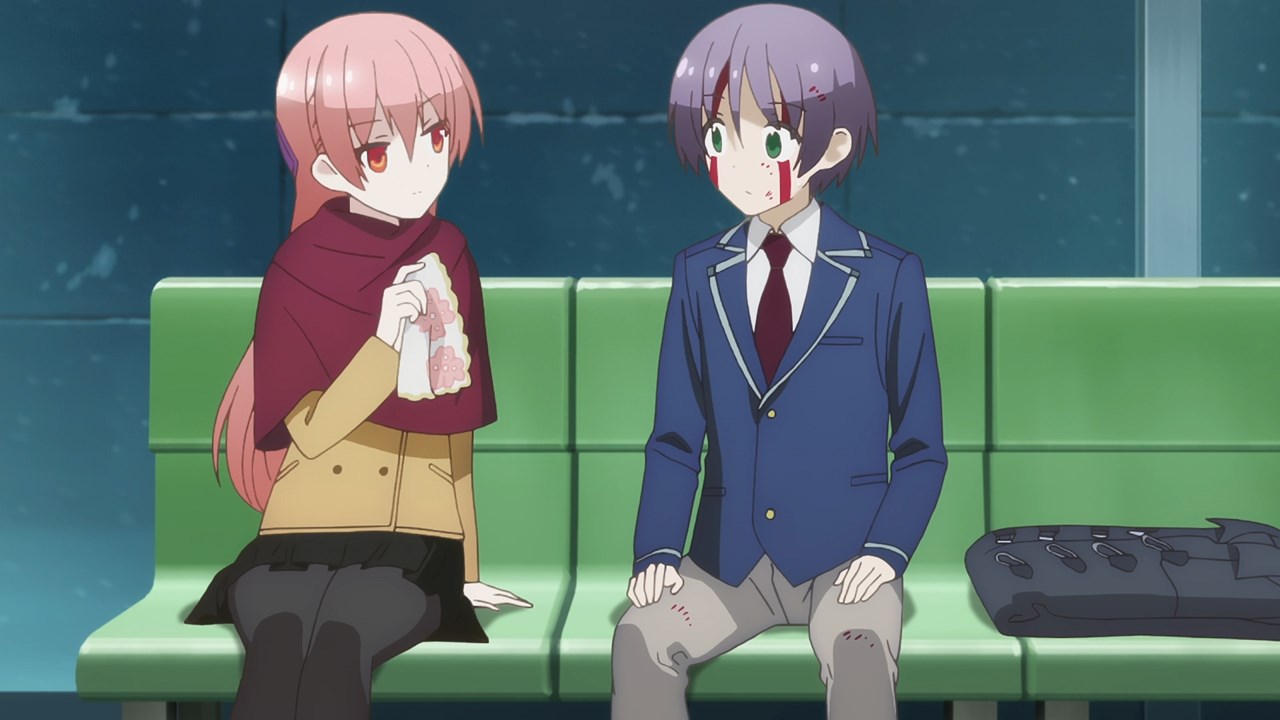
The heart of “Tonikawa: Over the Moon For You” lies in its endearing characters, each with their own quirks, insecurities, and aspirations. Nasa Yuzaki is a determined and hardworking protagonist, whose unwavering devotion to Tsukasa drives much of the series’ emotional depth. His bond with Tsukasa, a kind-hearted and enigmatic girl with a mysterious past, serves as the emotional core of the story.
The supporting cast includes a variety of colorful characters who enrich the narrative with their unique personalities and perspectives. From Nasa’s supportive friends to Tsukasa’s eccentric acquaintances, each character contributes to the series’ exploration of friendship, love, and the complexities of human relationships.
“Tonikawa: Over the Moon For You” explores themes of love, commitment, and the transformative power of marriage in a world filled with uncertainty and change. Through Nasa and Tsukasa’s relationship, the series examines the ways in which people navigate the challenges of adulthood and find strength and resilience in the bonds of love.
Additionally, “Tonikawa: Over the Moon For You” goes into themes of self-discovery and personal growth, as characters confront their own insecurities and learn to embrace their true selves. Whether it’s Nasa coming to terms with his feelings for Tsukasa or Tsukasa learning to open up to others, the series offers a heartfelt and uplifting message about the importance of authenticity and connection.
Kenjiro Hata’s artwork is a visual delight, characterized by detailed character designs, expressive facial expressions, and dynamic panel layouts that bring the world of “Tonikawa: Over the Moon For You” to life. The illustrations are rendered with a soft and delicate touch, capturing the quiet beauty of everyday life and the emotional depth of the characters’ experiences.
The atmosphere of “Tonikawa: Over the Moon For You” is one of warmth and intimacy, as characters navigate the ups and downs of married life with humor and grace. From heartfelt moments of connection to comedic misunderstandings and mishaps, each scene is beautifully rendered, immersing readers in the heartwarming and relatable world of the series.
Tonikawa: Over the Moon For You” is a delightful and uplifting manga series that offers a charming and heartfelt take on the romantic comedy genre. With its endearing characters, engaging plot, and beautiful artwork, it’s sure to appeal to readers of all ages.
Whether you’re a fan of romance manga or simply looking for a heartwarming story about the power of love, “Tonikawa: Over the Moon For You” is a must-read for anyone who appreciates the beauty of romance and the joy of finding true love.
6. In This Corner of the World
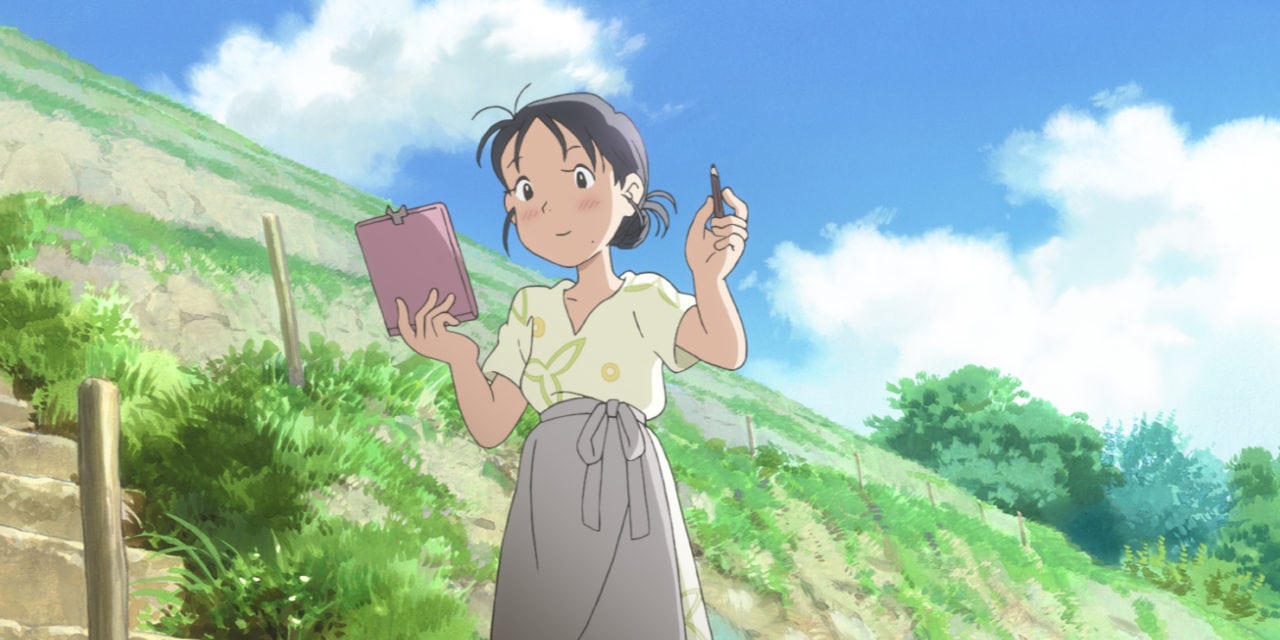
In This Corner of the World defies the odds by seamlessly weaving together multiple subgenres without losing its narrative cohesion. While primarily a romance, the film also looks into historical drama, following Suzu’s journey as she navigates life in Hiroshima and enters into an arranged marriage with a stranger.
The animation is of top-tier quality, perfectly complementing the powerful emotional beats that drive the story forward. Certain moments in the film are nothing short of gut-wrenching, underscoring its serious tone and intent.
Yet, amidst the weighty historical backdrop, the film manages to offer a profound exploration of romance, adding depth and nuance to its narrative. In This Corner of the World stands as a testament to the artistry and impact of anime when it tackles weighty themes with sincerity and skill.
“In This Corner of the World” is a profoundly moving historical drama manga series written and illustrated by Fumiyo Kouno. Originally serialized as a manga from 2007 to 2009, it has garnered widespread acclaim for its poignant storytelling, beautiful artwork, and sensitive portrayal of life during World War II in Japan.
Set in the 1930s and 1940s, “In This Corner of the World” follows the life of Suzu Urano, a young woman who grows up in the coastal town of Eba in Hiroshima Prefecture. As the world plunges into the chaos of war, Suzu navigates the everyday struggles of wartime existence, from rationing and air raids to the loss of loved ones and the ever-present fear of the unknown.
Through Suzu’s eyes, readers witness the profound impact of war on ordinary civilians, as she grapples with the challenges of survival while striving to maintain a sense of hope and resilience in the face of adversity. As the conflict intensifies and the horrors of war draw closer to home, Suzu must summon all her courage and determination to protect herself and those she loves.
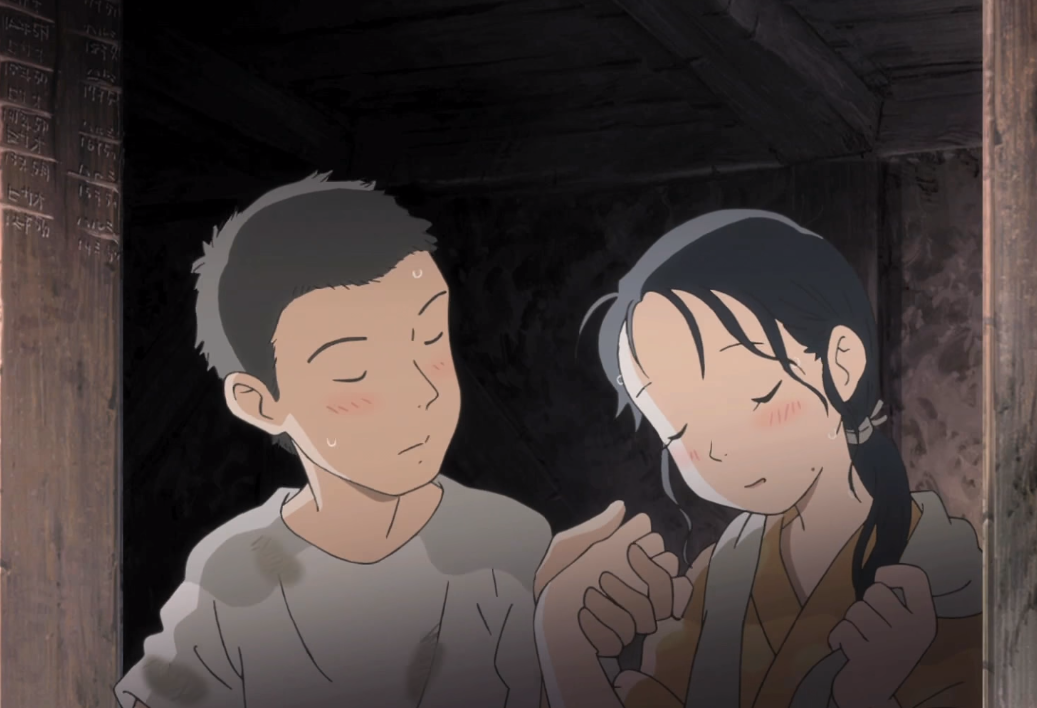
The heart of “In This Corner of the World” lies in its richly developed characters, each with their own hopes, dreams, and struggles. Suzu Urano is a compelling and relatable protagonist, whose journey from innocence to maturity serves as the emotional core of the story. Her resilience and compassion in the face of unimaginable hardship make her a deeply sympathetic and inspiring character.
The supporting cast includes a diverse array of characters who enrich the narrative with their unique personalities and perspectives. From Suzu’s loving family to her friends and neighbors in Eba, each character contributes to the series’ exploration of resilience, community, and the enduring power of the human spirit in times of crisis.
“In This Corner of the World” explores a wide range of themes, including the impact of war on civilian populations, the resilience of the human spirit, and the importance of hope and connection in times of adversity. Through Suzu’s journey, the series offers a poignant and thought-provoking meditation on the nature of conflict and its profound consequences for individuals and communities alike.
Additionally, “In This Corner of the World” goes into themes of memory and nostalgia, as Suzu reflects on her experiences and grapples with the passage of time. Whether it’s her cherished memories of childhood or her bittersweet recollections of lost loved ones, the series offers a deeply moving portrayal of the ways in which the past shapes our present and future.
Fumiyo Kouno’s artwork is a visual feast, characterized by detailed character designs, expressive facial expressions, and atmospheric backgrounds that bring the world of “In This Corner of the World” to life. The illustrations are rendered with a soft and delicate touch, capturing the quiet beauty of everyday life amidst the chaos of war.
The atmosphere of “In This Corner of the World” is one of quiet contemplation and introspection, as characters navigate the challenges of wartime existence with grace and resilience. From poignant moments of reflection to harrowing scenes of destruction and loss, each panel is beautifully crafted, immersing readers in the emotional depth and complexity of the story.
“In This Corner of the World” is a masterpiece of historical fiction that offers a poignant and deeply moving portrayal of life during wartime Japan. With its richly developed characters, evocative artwork, and powerful storytelling, it’s no wonder that “In This Corner of the World” has touched the hearts of readers around the world.
Whether you’re a fan of historical dramas or simply looking for a compelling story about the resilience of the human spirit, “In This Corner of the World” is a must-read for anyone who appreciates the beauty of storytelling and the power of empathy.
5. I Can’t Understand What My Husband Is Saying

Comedy often thrives on juxtaposition, a principle that anime, including I Can’t Understand What My Husband Is Saying, adeptly utilizes. Hajime, an otaku who operates from the comfort of his home blogging, finds himself married to Kaoru, an office assistant with a penchant for rowdy behavior when she’s had a few drinks.
The crux of the show’s humor lies in the couple’s mutual inability to fully comprehend or connect with each other’s interests, despite their unwavering loyalty. Kaoru’s exasperation in understanding Hajime’s otaku obsessions serves as a primary source of comedic gold. It’s a straightforward yet effective formula that underscores the show’s charm and appeal.
“I Can’t Understand What My Husband Is Saying” (Japanese: “Danna ga Nani wo Itteiru ka Wakaranai Ken”) is a delightful romantic comedy manga series written and illustrated by Cool-kyou Shinja. Serialized from 2011 to 2017, it has captured the hearts of readers with its charming characters, relatable humor, and heartwarming portrayal of married life.
The series revolves around the daily lives of Hajime Tsunashi, an otaku office worker, and his wife, Kaoru, a hardworking office lady. Despite their contrasting personalities and interests, the couple’s love for each other shines through as they navigate the ups and downs of married life, from quirky misunderstandings to heartfelt moments of connection.
Set in modern-day Japan, “I Can’t Understand What My Husband Is Saying” humorously explores the dynamics of married life and the challenges of balancing work, relationships, and personal interests. Through Hajime and Kaoru’s interactions with each other and their friends and family, the series offers a lighthearted and endearing glimpse into the joys and struggles of married life.
The heart of “I Can’t Understand What My Husband Is Saying” lies in its lovable characters, each with their own quirks, flaws, and endearing traits.

Hajime Tsunashi is a dedicated otaku with a passion for anime and manga, whose eccentricities often lead to amusing misunderstandings with his wife and coworkers. Kaoru Tsunashi is a patient and understanding office lady, whose unwavering support for her husband’s hobbies and interests serves as the emotional anchor of the series.
The supporting cast includes a variety of colorful characters who enrich the narrative with their unique personalities and perspectives. From Hajime and Kaoru’s friends and coworkers to their family members and fellow otaku, each character contributes to the series’ humor and charm, adding depth and dimension to the world of the story.
“I Can’t Understand What My Husband Is Saying” explores themes of love, communication, and the importance of acceptance in a marriage. Through Hajime and Kaoru’s relationship, the series examines the ways in which people navigate the challenges of married life and find strength and resilience in the bonds of love.
Additionally, “I Can’t Understand What My Husband Is Saying” goes into themes of self-discovery and personal growth, as characters confront their own insecurities and learn to embrace their true selves.
Whether it’s Hajime coming to terms with his otaku lifestyle or Kaoru finding a balance between her career and personal life, the series offers a heartfelt and uplifting message about the power of acceptance and understanding in a relationship.
Cool-kyou Shinja’s artwork is a visual delight, characterized by expressive character designs, dynamic panel layouts, and comedic facial expressions that bring the humor of “I Can’t Understand What My Husband Is Saying” to life. The illustrations are rendered with a playful energy and attention to detail that complements the series’ comedic tone and fast-paced storytelling.
The atmosphere of “I Can’t Understand What My Husband Is Saying” is one of warmth and humor, as characters navigate the challenges of married life with love and laughter. From quirky misunderstandings to heartfelt moments of connection, each chapter is filled with charming and relatable moments that will resonate with readers of all ages.
I Can’t Understand What My Husband Is Saying is a delightful and heartwarming manga series that offers a charming and relatable take on the romantic comedy genre. With its lovable characters, engaging plot, and expressive artwork, it’s sure to appeal to readers of all ages.
Whether you’re a fan of romantic comedies or simply looking for a fun and heartwarming read, “I Can’t Understand What My Husband Is Saying” is a must-read for anyone who appreciates the humor and warmth of married life.
4. Grandpa and Grandma Turn Young Again
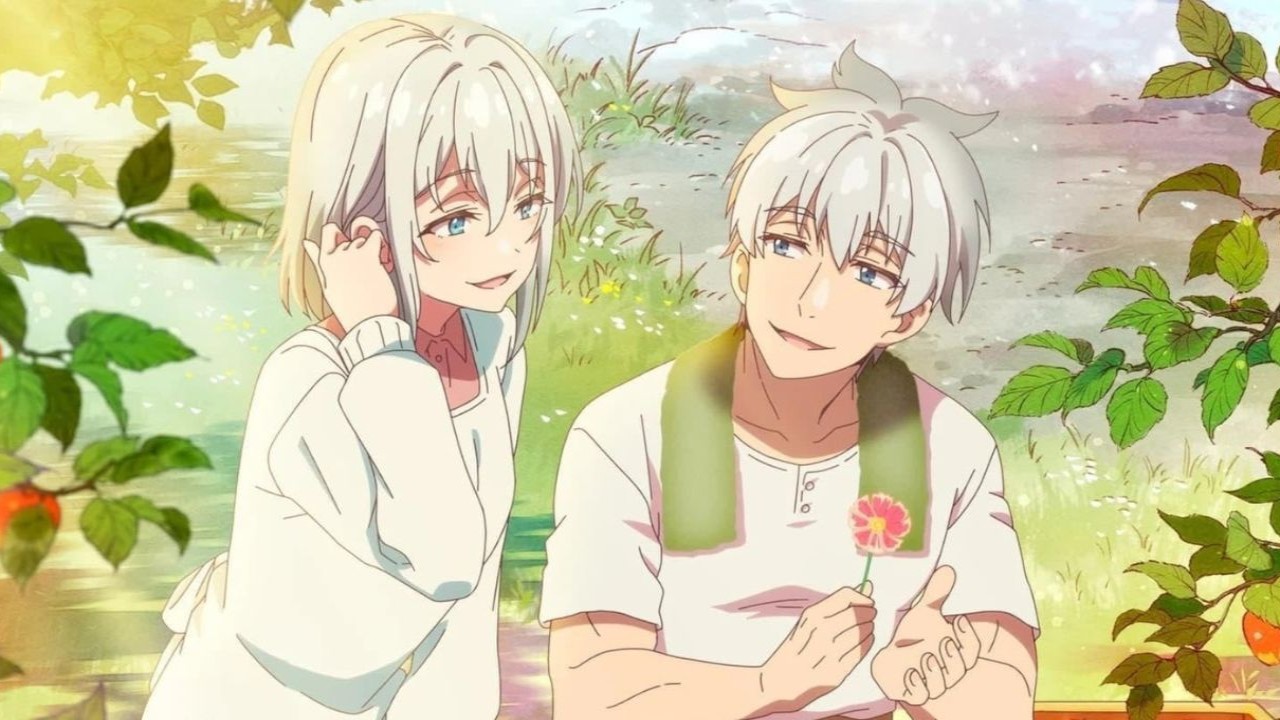
In the spring of 2024, Grandpa and Grandma Turn Young Again debuted, delivering precisely on its titular promise. Shozo and Ine, having shared nearly five decades of marriage, boast an unshakable bond forged from trust, unwavering support, comfort, and deep devotion.
Thanks to a supernatural twist, their aging bodies undergo a remarkable transformation, regressing to their youthful forms, enabling them to relive their golden years in peak physical condition.
While the supernatural aspect may not be the anime’s most compelling feature, Grandpa and Grandma Turn Young Again truly shines in its portrayal of Shozo and Ine’s heartwarming dynamic, steeped in their rich history together.
Save for a few endearingly embarrassing moments that feel somewhat incongruous for a couple with such a lengthy tenure, their interactions exude wholesomeness and familiarity, rooted in the ordinary rhythms of life.
Their love and connection are so steadfast that they require no constant reaffirmation—a rare phenomenon in romance anime featuring married couples. Moreover, the anime looks into the couple’s relationships across generations, offering poignant insights through scenes with their children and granddaughters.
“Grandpa and Grandma Turn Young Again” (Japanese: “Rojiura no Ani, Papa, Mama, Hito no Ko”) is a heartwarming manga series written and illustrated by Keiko Nishi. Serialized since 2016, it has captured the hearts of readers with its touching portrayal of family, love, and the joys of youth.
The story of “Grandpa and Grandma Turn Young Again” revolves around an elderly couple, Nao and Komi, who unexpectedly find themselves transformed into young adults. In their newfound youth, Nao and Komi embark on a journey of rediscovery, as they navigate the challenges and delights of being young again while confronting the realities of aging.
Set in modern-day Japan, the series humorously explores the generation gap between Nao and Komi and their grandchildren, as they navigate the complexities of family life and the passage of time. Through their interactions with each other and their loved ones, Nao and Komi rediscover the importance of love, laughter, and cherishing the moments we have together.
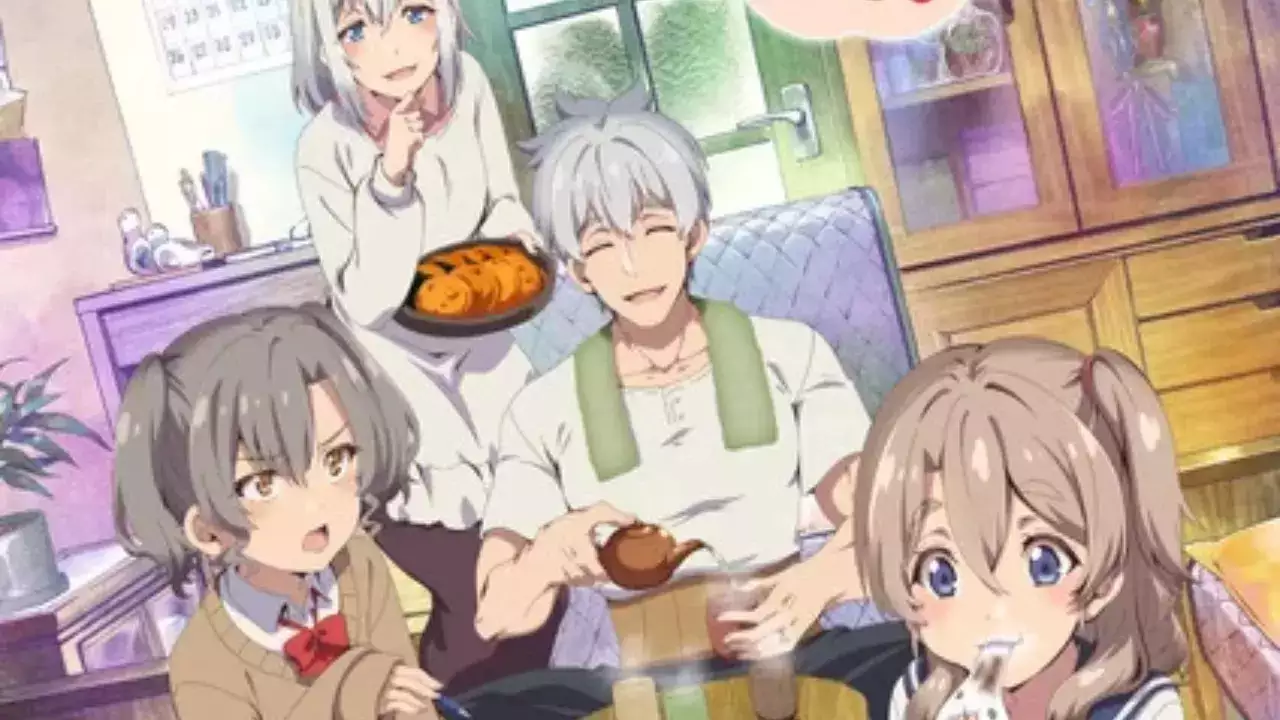
The heart of “Grandpa and Grandma Turn Young Again” lies in its endearing characters, each with their own hopes, dreams, and insecurities. Nao and Komi are a lovable and relatable couple, whose journey of rediscovery serves as the emotional core of the series. Their bond with their grandchildren, as well as their interactions with other members of their community, adds depth and dimension to the story.
The supporting cast includes a variety of colorful characters who enrich the narrative with their unique personalities and perspectives. From Nao and Komi’s grandchildren to their friends and neighbors, each character contributes to the series’ exploration of family, love, and the complexities of human relationships.
“Grandpa and Grandma Turn Young Again” explores themes of aging, youth, and the passage of time in a world that often values youth and vitality above all else. Through Nao and Komi’s journey, the series examines the ways in which people confront the challenges of growing old and find joy and fulfillment in embracing life’s uncertainties.
Additionally, “Grandpa and Grandma Turn Young Again” goes into themes of family and intergenerational relationships, as characters navigate the complexities of their relationships with their loved ones. Whether it’s Nao and Komi reconnecting with their grandchildren or their grandchildren learning to appreciate their grandparents’ wisdom and experience, the series offers a heartfelt and uplifting message about the power of love and connection.
Keiko Nishi’s artwork is a visual delight, characterized by detailed character designs, expressive facial expressions, and atmospheric backgrounds that bring the world of “Grandpa and Grandma Turn Young Again” to life. The illustrations are rendered with a soft and delicate touch, capturing the quiet beauty of everyday life and the emotional depth of the characters’ experiences.
The atmosphere of “Grandpa and Grandma Turn Young Again” is one of warmth and nostalgia, as characters navigate the joys and challenges of family life with humor and grace. From heartfelt moments of connection to humorous misunderstandings and mishaps, each scene is beautifully rendered, immersing readers in the heartwarming and relatable world of the series.
Grandpa and Grandma Turn Young Again” is a delightful and uplifting manga series that offers a heartfelt exploration of family, love, and the joys of youth. With its endearing characters, engaging plot, and charming artwork, it’s sure to resonate with readers of all ages.
Whether you’re a fan of slice-of-life manga or simply looking for a heartwarming story about the power of love and connection, “Grandpa and Grandma Turn Young Again” is a must-read for anyone who appreciates the beauty of family and the importance of cherishing the moments we have together.
3. Love Is Like A Cocktail

Chisato maintains a poised and professional demeanor outside the house, especially in her role as an assistant manager. However, within the confines of her home with her husband Sora, a different facet of Chisato emerges—one that delights in unwinding with a drink.
Both Chisato and Sora boast their own unique quirks and charms, but it’s their undeniable chemistry that sets the stage for the anime’s most memorable and humorous moments.
Their mutual affection is palpable, and witnessing their genuine efforts to bring joy to one another is truly heartwarming. The dynamic between husband and wife is a source of genuine pleasure for viewers, offering a delightful look into their shared life and the bonds that strengthen their relationship.
“Love Is Like A Cocktail” (Japanese: “Osake wa Fuufu ni Natte kara”) is a delightful slice-of-life manga series written and illustrated by Crystal na Yousuke. Originally serialized from 2015 to 2018, it has charmed readers with its heartwarming portrayal of married life and its exploration of the simple joys of love and companionship.
The story of “Love Is Like A Cocktail” centers around the married couple, Chisato Mizusawa and Sora Mizusawa. Chisato is a hardworking office lady who often finds herself stressed from the demands of her job. To help her unwind and relax, Sora, her loving husband, surprises her with delicious cocktails tailored to her tastes whenever she comes home from work.
Set in modern-day Japan, the series offers a lighthearted and endearing look at the everyday lives of Chisato and Sora as they navigate the challenges and joys of married life. Through their interactions with each other and their friends, the series celebrates the small moments of happiness that can be found in the simple pleasures of life.
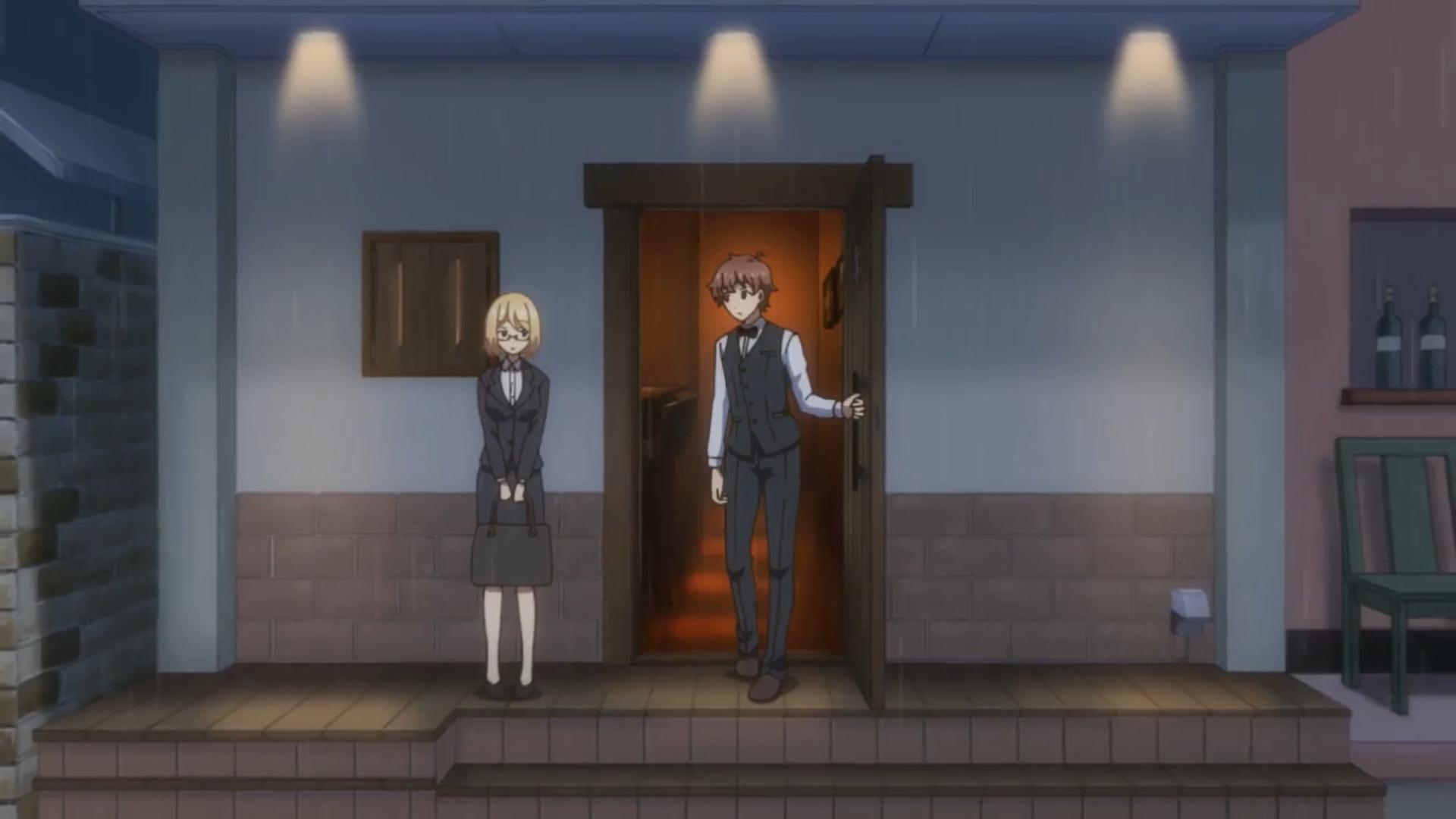
The heart of “Love Is Like A Cocktail” lies in its lovable characters, each with their own quirks, flaws, and endearing traits. Chisato Mizusawa is a dedicated office worker who often struggles with stress and fatigue. Her husband, Sora Mizusawa, is a caring and attentive spouse who goes above and beyond to make her happy.
The supporting cast includes a variety of colorful characters who enrich the narrative with their unique personalities and perspectives. From Chisato and Sora’s friends and coworkers to their family members and acquaintances, each character contributes to the series’ exploration of love, friendship, and the complexities of human relationships.
“Love Is Like A Cocktail” explores themes of love, relaxation, and the importance of cherishing the moments we have with our loved ones. Through Chisato and Sora’s relationship, the series examines the ways in which people find solace and comfort in the company of those they love, as well as the power of small gestures to strengthen the bonds of marriage.
Additionally, “Love Is Like A Cocktail” goes into themes of self-care and work-life balance, as characters confront the challenges of maintaining their physical and emotional well-being in a world filled with stress and pressure. Whether it’s enjoying a delicious cocktail after a long day at work or spending quality time with loved ones, the series offers a heartfelt and uplifting message about the importance of taking time to relax and unwind.
Crystal na Yousuke’s artwork is a visual delight, characterized by detailed character designs, expressive facial expressions, and colorful illustrations that capture the warmth and intimacy of married life. The illustrations are rendered with a soft and delicate touch, evoking a sense of comfort and tranquility that complements the series’ heartwarming tone.
The atmosphere of “Love Is Like A Cocktail” is one of warmth and relaxation, as characters savor the simple pleasures of life and cherish the moments they have together. From cozy evenings at home to fun outings with friends, each scene is beautifully rendered, immersing readers in the cozy and inviting world of the series.
Love Is Like A Cocktail is a delightful and heartwarming manga series that offers a charming and relatable portrayal of married life. With its lovable characters, engaging plot, and beautiful artwork, it’s sure to appeal to readers of all ages. Whether you’re a fan of slice-of-life manga or simply looking for a cozy and comforting read, “Love Is Like A Cocktail” is a must-read for anyone who appreciates the beauty of love and companionship.
2. My Bride Is A Mermaid

When high school student Nagasumi finds himself on the brink of drowning, a mermaid named Sun Seto swoops in to rescue him. However, being a mermaid is only the tip of the iceberg when it comes to Sun’s unusual circumstances—she also happens to be a member of a yakuza family.
In a twist of fate, Nagasumi learns that according to mermaid tradition, revealing a mermaid’s true identity to a human warrants death. However, a compromise is reached between the two families: Nagasumi can be spared if he agrees to marry Sun. Thus begins the hilariously chaotic union of crime, marriage, and mermaids in My Bride is a Mermaid.
While the premise may not be the most conventional, the anime shines brightest in its comedic moments. It’s a rollercoaster ride of absurdity that’s sure to leave viewers in stitches. My Bride is a Mermaid may not be everyone’s cup of tea, but for those seeking laughter above all else, it’s a delightful romp worth indulging in.
“My Bride is a Mermaid” (Japanese: “Seto no Hanayome”) is a hilarious romantic comedy manga series written by Tahiko Kimura. Serialized from 2002 to 2009, it has grabbed readers with its uproarious humor, eccentric characters, and unique blend of romance and fantasy elements.
The story of “My Bride is a Mermaid” revolves around Nagasumi Michishio, a high school student who finds himself in a precarious situation after nearly drowning during a summer vacation trip. To his surprise, Nagasumi is rescued by Sun Seto, a beautiful mermaid who belongs to a yakuza family of merfolk known as the Seto Group.
In order to prevent tensions between the merfolk and humans, Sun’s family insists that Nagasumi must marry her to keep their secret safe. Despite his initial reluctance, Nagasumi agrees to the arrangement, setting the stage for a series of hilarious misadventures as he navigates the challenges of married life with his mermaid bride.
Set in a fictional coastal town in Japan, the series blends elements of romance, comedy, and fantasy as it explores the eccentricities of mermaid culture and the absurdities of everyday life. Through Nagasumi and Sun’s interactions with each other and their colorful cast of friends and family, “My Bride is a Mermaid” offers a delightful and entertaining look at the complexities of love and relationships.

The heart of “My Bride is a Mermaid” lies in its eccentric and lovable characters, each with their own quirks, flaws, and endearing traits. Nagasumi Michishio is a good-natured and somewhat naive protagonist who often finds himself caught up in absurd situations beyond his control. His mermaid bride, Sun Seto, is a spirited and headstrong young woman who is fiercely devoted to Nagasumi despite her misgivings about their arranged marriage.
The supporting cast includes a variety of colorful characters who enrich the narrative with their unique personalities and perspectives. From Sun’s overprotective father, Gozaburo Seto, to Nagasumi’s feisty classmate, Lunar Edomae, each character contributes to the series’ humor and charm, adding depth and dimension to the world of the story.
“My Bride is a Mermaid” explores themes of love, friendship, and the importance of acceptance in a world filled with cultural differences and misunderstandings. Through Nagasumi and Sun’s relationship, the series examines the ways in which people overcome obstacles and forge deep connections with each other despite their differences.
Additionally, “My Bride is a Mermaid” goes into themes of family and tradition, as characters confront the expectations and obligations placed upon them by their loved ones and society at large.
Whether it’s Nagasumi navigating the eccentricities of mermaid culture or Sun struggling to balance her duties as a member of the Seto Group with her desire for independence, the series offers a heartfelt and uplifting message about the power of love to transcend boundaries and unite people from different walks of life.
Tahiko Kimura’s artwork is a visual feast, characterized by dynamic character designs, expressive facial expressions, and vibrant illustrations that bring the world of “My Bride is a Mermaid” to life. The illustrations are rendered with a playful energy and attention to detail that complements the series’ comedic tone and fast-paced storytelling.
The atmosphere of “My Bride is a Mermaid” is one of chaos and hilarity, as characters navigate the absurdities of mermaid culture and the challenges of everyday life with humor and grace. From slapstick comedy to heartfelt moments of connection, each chapter is filled with charming and relatable moments that will resonate with readers of all ages.
My Bride is a Mermaid” is a delightful and entertaining manga series that offers a unique and humorous take on the romantic comedy genre. With its eccentric characters, engaging plot, and vibrant artwork, it’s sure to appeal to readers looking for a lighthearted and enjoyable read.
Whether you’re a fan of romance, comedy, or fantasy, “My Bride is a Mermaid” is a must-read for anyone who appreciates the absurdities of love and the joy of finding unexpected connections in unexpected places.
1. The World is Still Beautiful

The World is Still Beautiful offers a refreshing take on romance and fantasy anime, particularly for those seeking a unique portrayal of a powerful married couple. Nike and Livius find themselves united in an arranged marriage, a strategic move aimed at solidifying the alliance between their respective kingdoms.
While Nike exudes warmth and friendliness, she initially struggles to come to terms with Livius’ demeanor and decisions. Their journey unfolds as they navigate the complexities of their relationship, overcoming personal and political obstacles together. What sets this anime apart is the gradual development of their love, which feels authentic and organic despite its slow progression.
Amidst the backdrop of a fascinating fantasy world, The World is Still Beautiful delivers an engaging narrative that explores the intricacies of marriage and partnership. It’s a delightful blend of romance and fantasy, offering viewers a compelling portrayal of a couple whose bond deepens over time through shared experiences and mutual growth.
“The World is Still Beautiful” (Japanese: “Soredemo Sekai wa Utsukushii”) is a nice romance and fantasy anime series based on the manga of the same name written by Dai Shiina. Airing in 2014, it mesmerized audiences with its enchanting tale, compelling characters, and lush world-building.
“The World is Still Beautiful” follows the story of Nike Lemercier, the fourth princess of the Rain Dukedom, a small country with the ability to control the weather. As part of a political arrangement, Nike is sent to marry Livius I, the Sun King of the Sun Kingdom, a powerful and ambitious ruler known for conquering neighboring nations.
Set in a fantastical world reminiscent of European kingdoms, the series intricately weaves together elements of romance, politics, and fantasy. Against the backdrop of looming political tensions and power struggles, Nike and Livius navigate the complexities of their arranged marriage and the challenges of ruling their respective kingdoms.
At the heart of “The World is Still Beautiful” are its richly developed characters, each with their own dreams, motivations, and insecurities. Nike Lemercier is a spirited and compassionate young woman who possesses the ability to summon rain, a power that she uses to bring joy and prosperity to her kingdom.
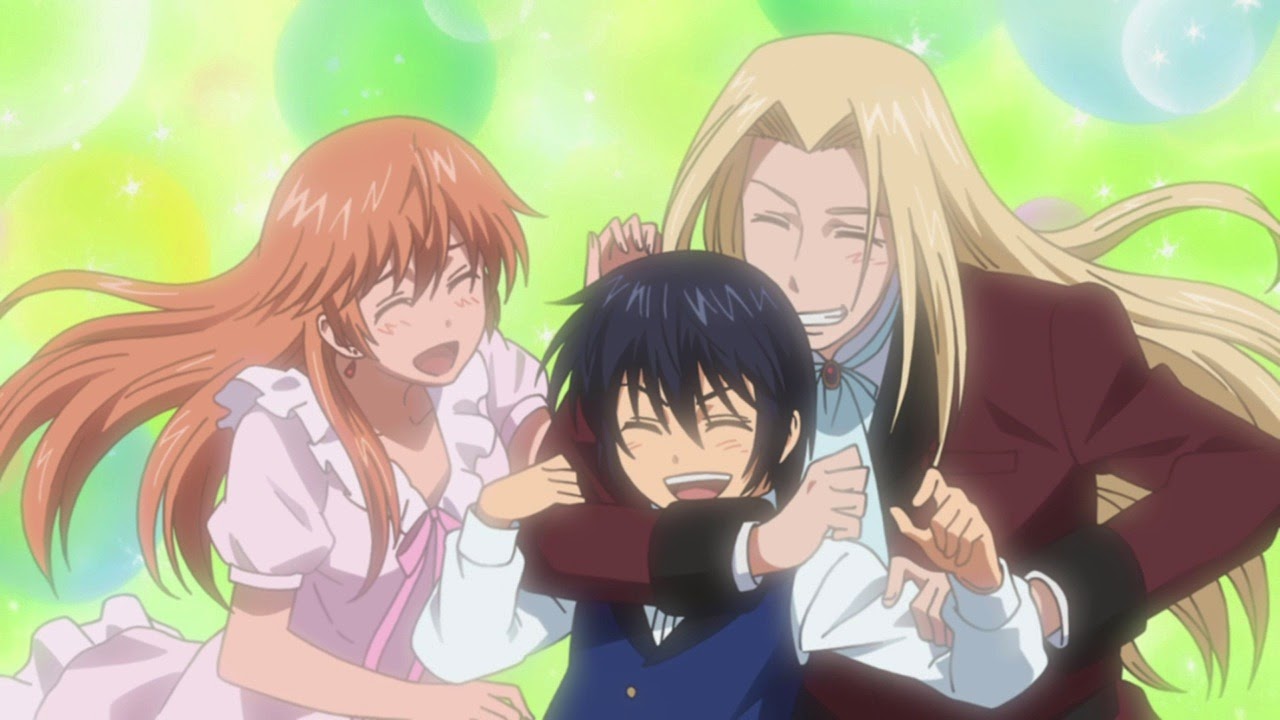
Livius I, also known as Livi, is a formidable and enigmatic ruler whose tough exterior belies a troubled past and a deep longing for genuine connection.
The supporting cast includes a diverse array of characters who enrich the narrative with their unique personalities and perspectives. From Nike’s loyal attendants to Livius’s advisors and subjects, each character contributes to the series’ exploration of loyalty, sacrifice, and the complexities of power.
“The World is Still Beautiful” explores themes of love, duty, and the transformative power of compassion in a world torn apart by conflict and ambition. Through Nike and Livius’s relationship, the series examines the ways in which love can transcend barriers of politics and power, bringing together people from different walks of life and forging deep connections that defy expectations.
Additionally, “The World is Still Beautiful” goes into themes of leadership and responsibility, as characters confront the challenges of ruling their kingdoms and making difficult decisions for the greater good. Whether it’s Nike learning to navigate the intricacies of court politics or Livius grappling with the burdens of his past, the series offers a heartfelt and nuanced exploration of the human condition.
“The World is Still Beautiful” boasts beautiful artwork and animation that bring its richly detailed world to life. The character designs are expressive and distinctive, capturing the personalities and emotions of the characters with nuance and depth. The backgrounds are lush and atmospheric, evoking the grandeur of royal palaces and sweeping surfaces.
The atmosphere of “The World is Still Beautiful” is one of romance and fantasy, as characters get on a journey of self-discovery and growth amidst the backdrop of political intrigue and power struggles. From tender moments of intimacy to epic confrontations and battles, each episode is beautifully crafted, immersing viewers in the nice and emotionally resonant world of the series.
The World is Still Beautiful is a nice and emotionally resonant anime series that offers a compelling blend of romance, fantasy, and political intrigue. With its richly developed characters, engaging plot, and beautiful artwork, it’s sure to appeal to fans of romance and fantasy alike.
Whether you’re drawn to tales of epic love or epic adventures, “The World is Still Beautiful” is a must-watch for anyone who appreciates the power of love to conquer even the darkest of circumstances.

